- Refined and well-mannered
- Loads of AWD grip
- Roomy, well-built interior packed with tech
- CVT automatic gearbox is hardly engaging to drive
- Wagon is not as dynamic as sedan
- Manual drivers are heavily penalised
The Subaru WRX story begins with the birth of Subaru Tecnica International all the way back in 1988, ushering in an era of rally-bred, AWD pocket rockets for the road. Some thirty years later, 2023 Subaru WRX now enters its fifth generation with a complete redesign. With performance cars on the verge of extinction as we move to an electrified future, this WRX might be the last model in this enthusiast-focused breed.
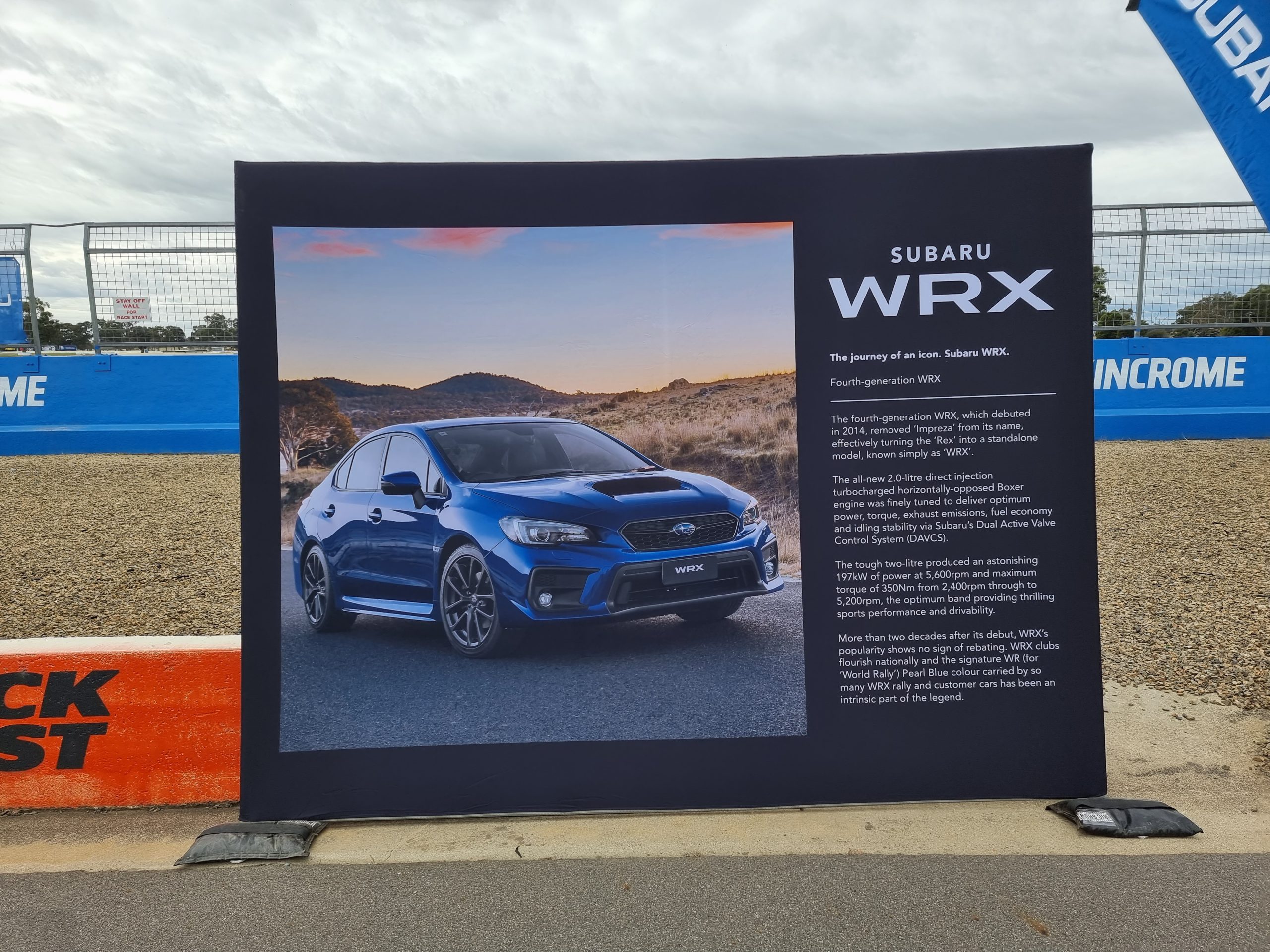
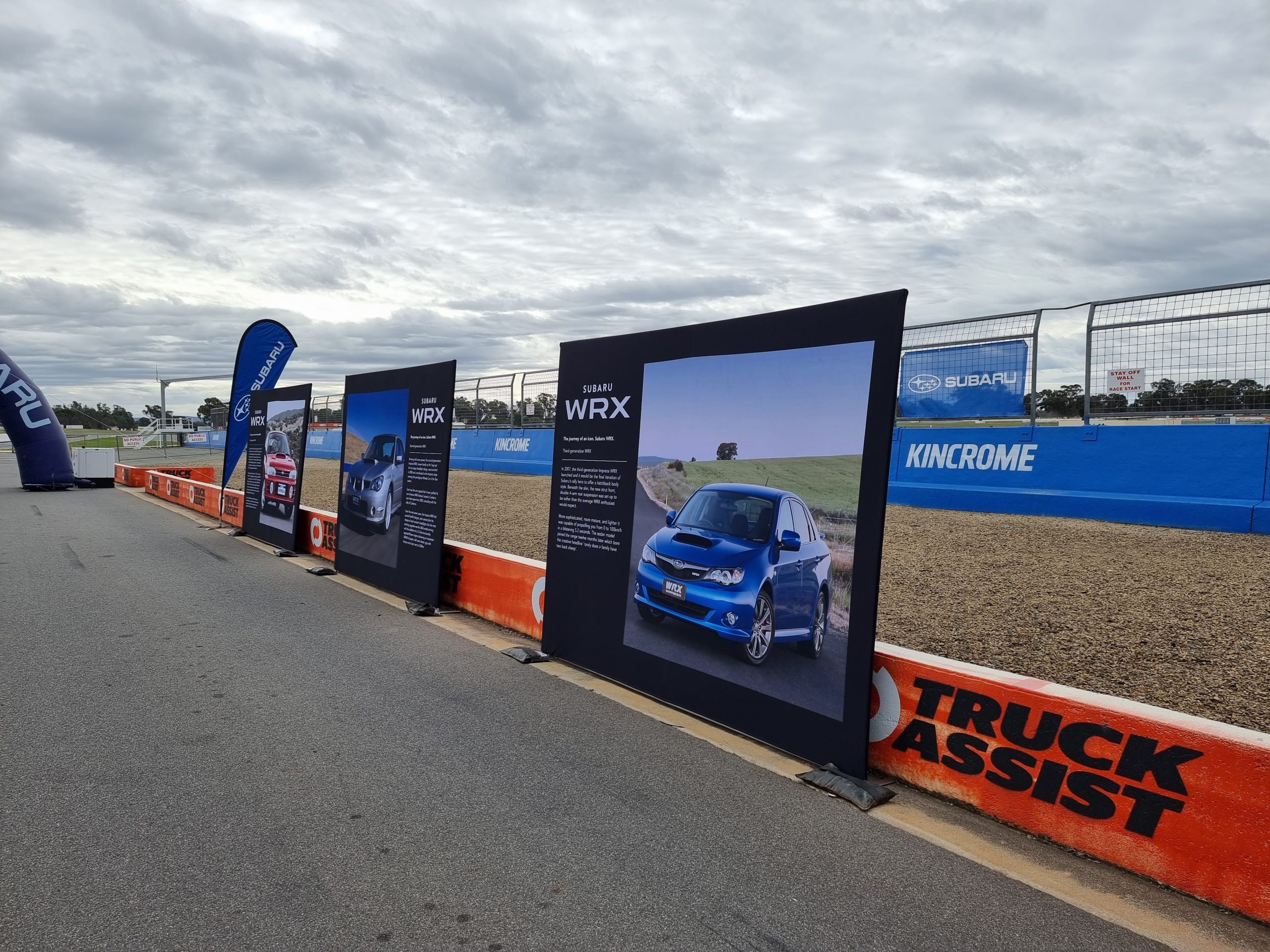
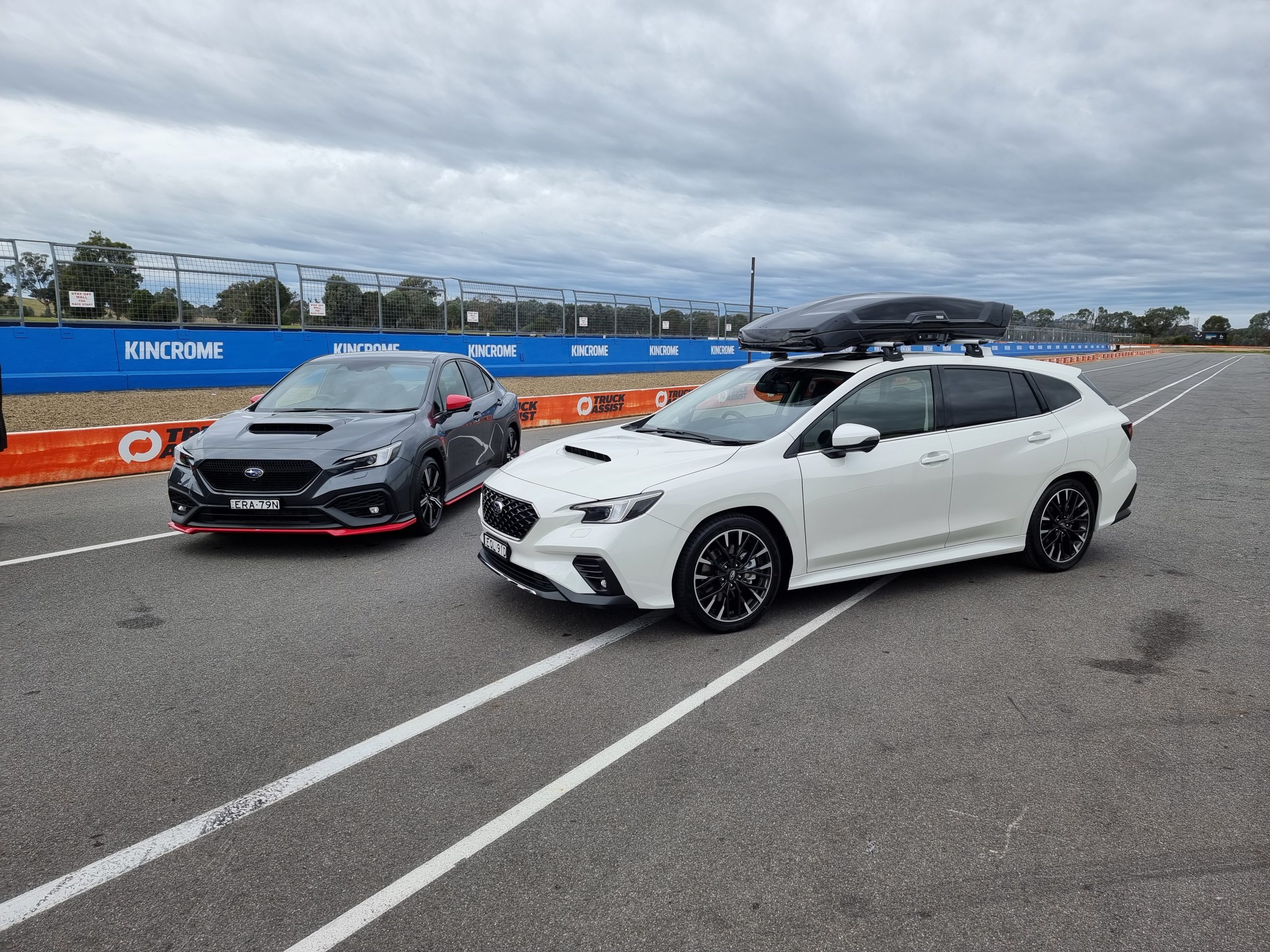
Subaru touts the WRX as a more balanced car these days, saying it’s both a rally-car for the road and a more refined, premium package. We attended the car’s Australian media launch event held in Victoria’s picturesque alpine region and at the legendary Winton Raceway to put the 2023 Subaru WRX through its paces, driving both the manual and automatic variants to see whether Subaru managed to deliver another fine performance car.
Price & Equipment:
The 2023 Subaru WRX range kicks off from $44,990 plus on-road costs (from around $50,000 drive away, depending on location), and is offered in three main models: the base model called simply ‘WRX’, mid-spec RS (GT wagon) and the top-spec tS. All three models are available as either a four-door sedan or the five-door wagon, called ‘Sportswagon’ locally.
Standard equipment on the 2023 Subaru WRX sedan (manual: $44,990, CVT: $48,990) includes 18-inch alloy wheels, LED lighting with LED front fog lights, auto lights and wipers, a leather steering wheel, dual-zone climate control with rear vents on all automatic variants, keyless entry and start, electric-folding mirrors, an 11.6-inch portrait touchscreen with wired Apple CarPlay and Android Auto, digital radio, a six-speaker sound system, cruise control, cloth upholstery and rear privacy glass. The wagon ($49,990) also adds ambient interior lighting and one-touch folding rear seats with reclining.
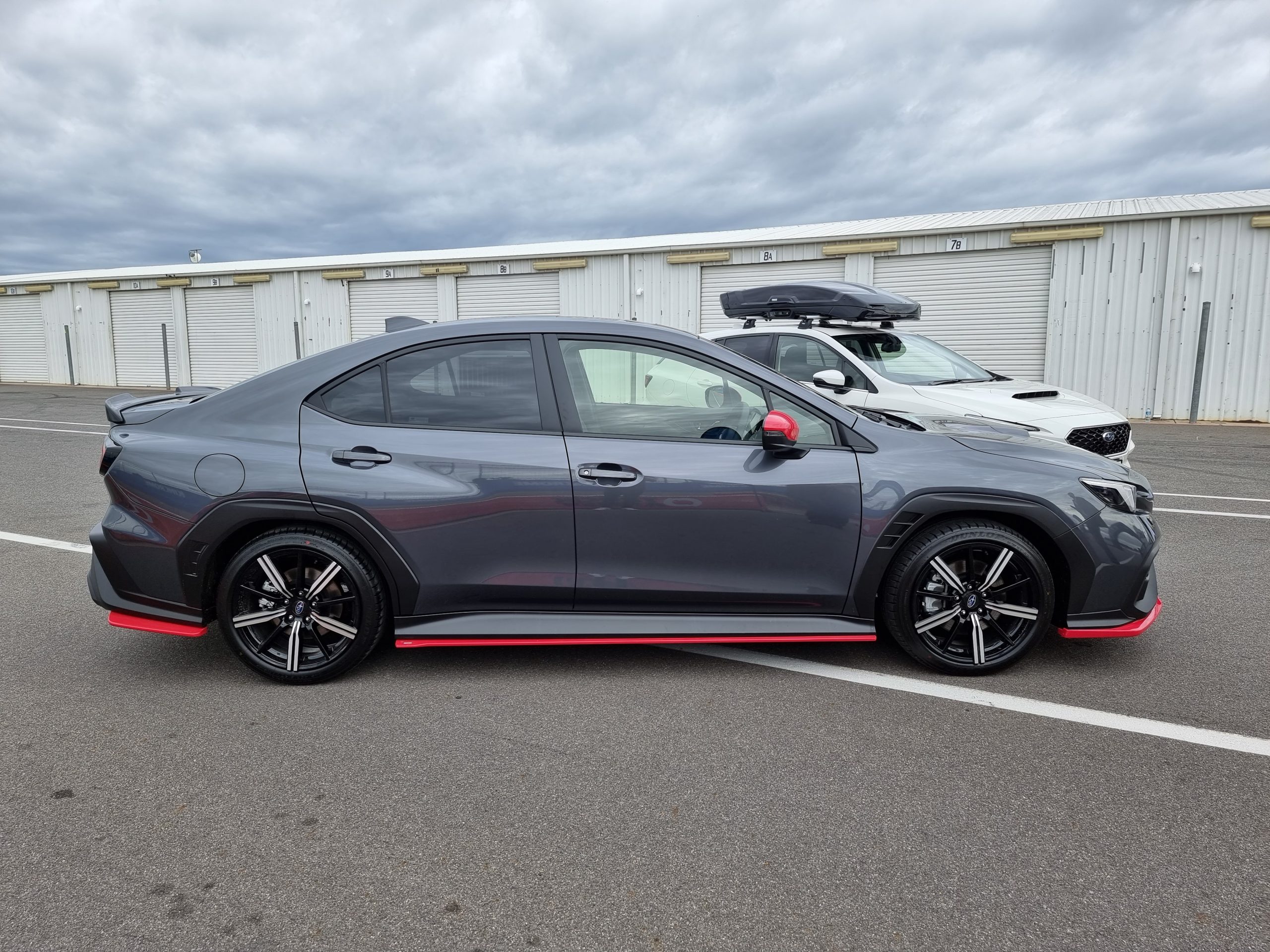
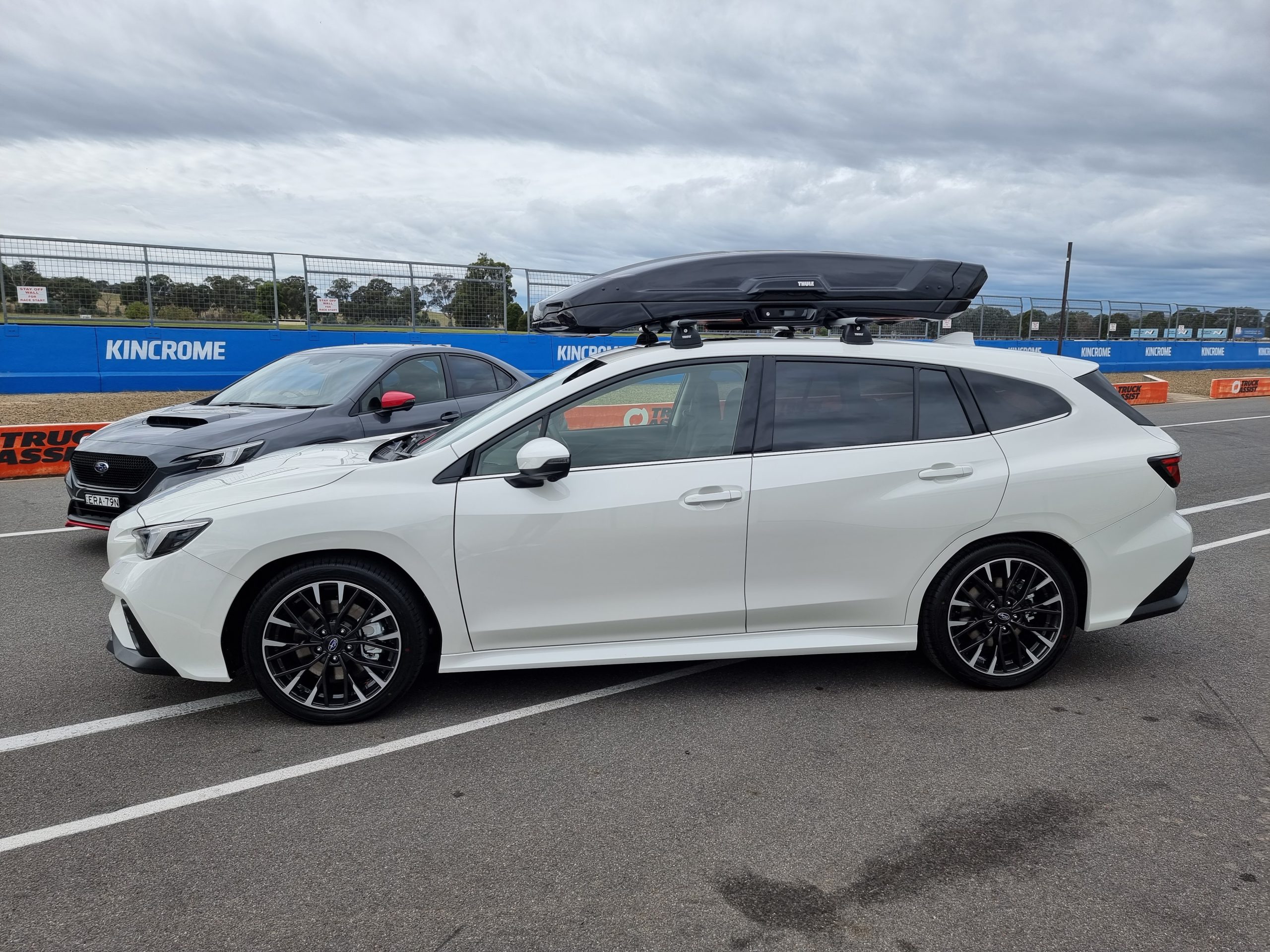
Safety equipment includes eight airbags (including a front centre unit), blind-spot monitoring with rear cross-traffic alert and lane change assist, a reversing camera and tyre pressure monitoring.
Disappointingly, the manual WRX is not available with features like auto emergency braking (AEB), adaptive cruise control or lane keep assist because they aren’t engineered for manual transmissions.
Those features are reserved for all automatic variants, which also add auto high beam, automatic reverse braking, speed sign recognition, intelligent speed limiting, lead vehicle start alert, lane departure and centre assist, traffic sign recognition, an electric parking brake with auto hold, selectable driving modes and auto stop/start.
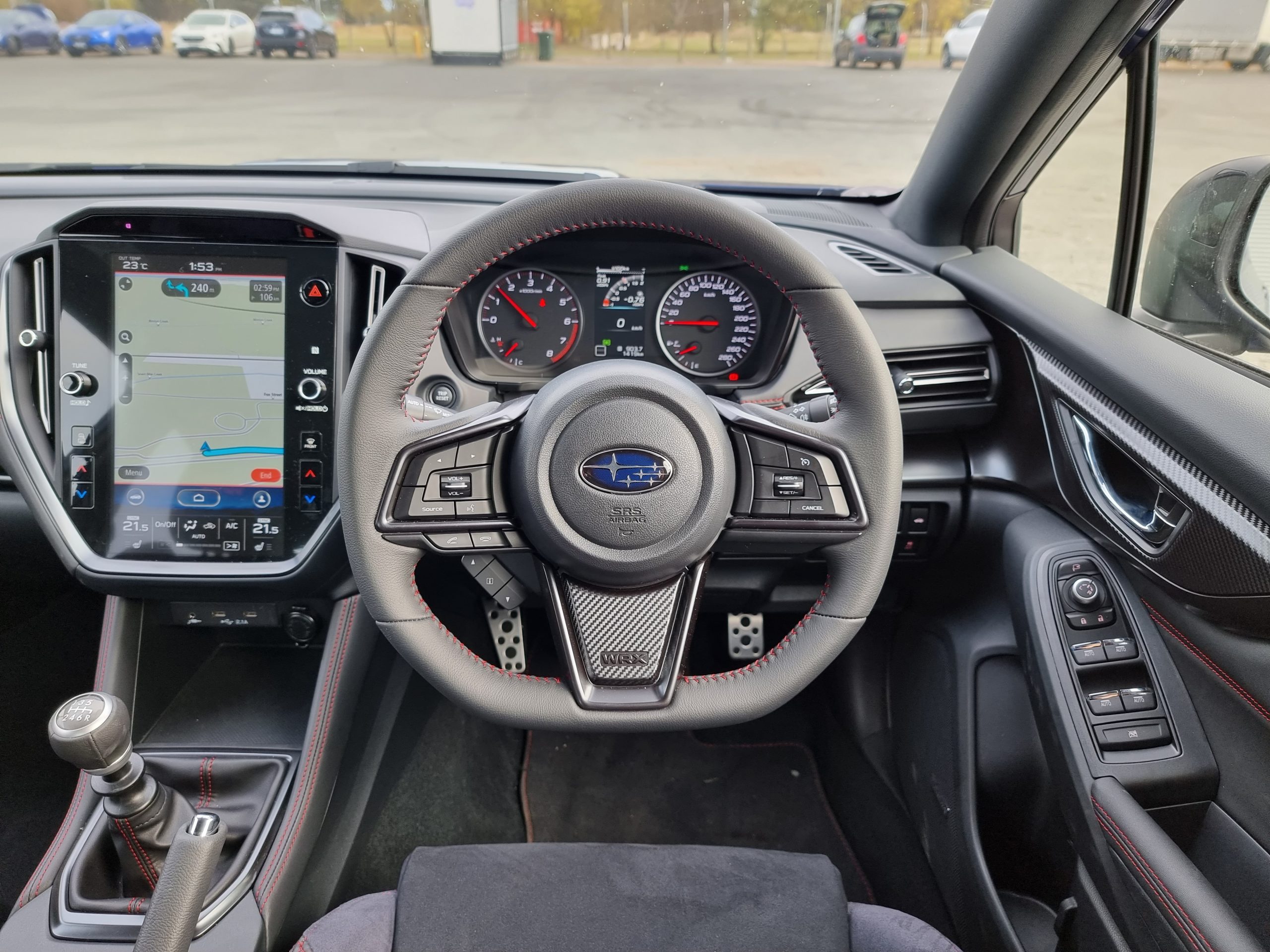
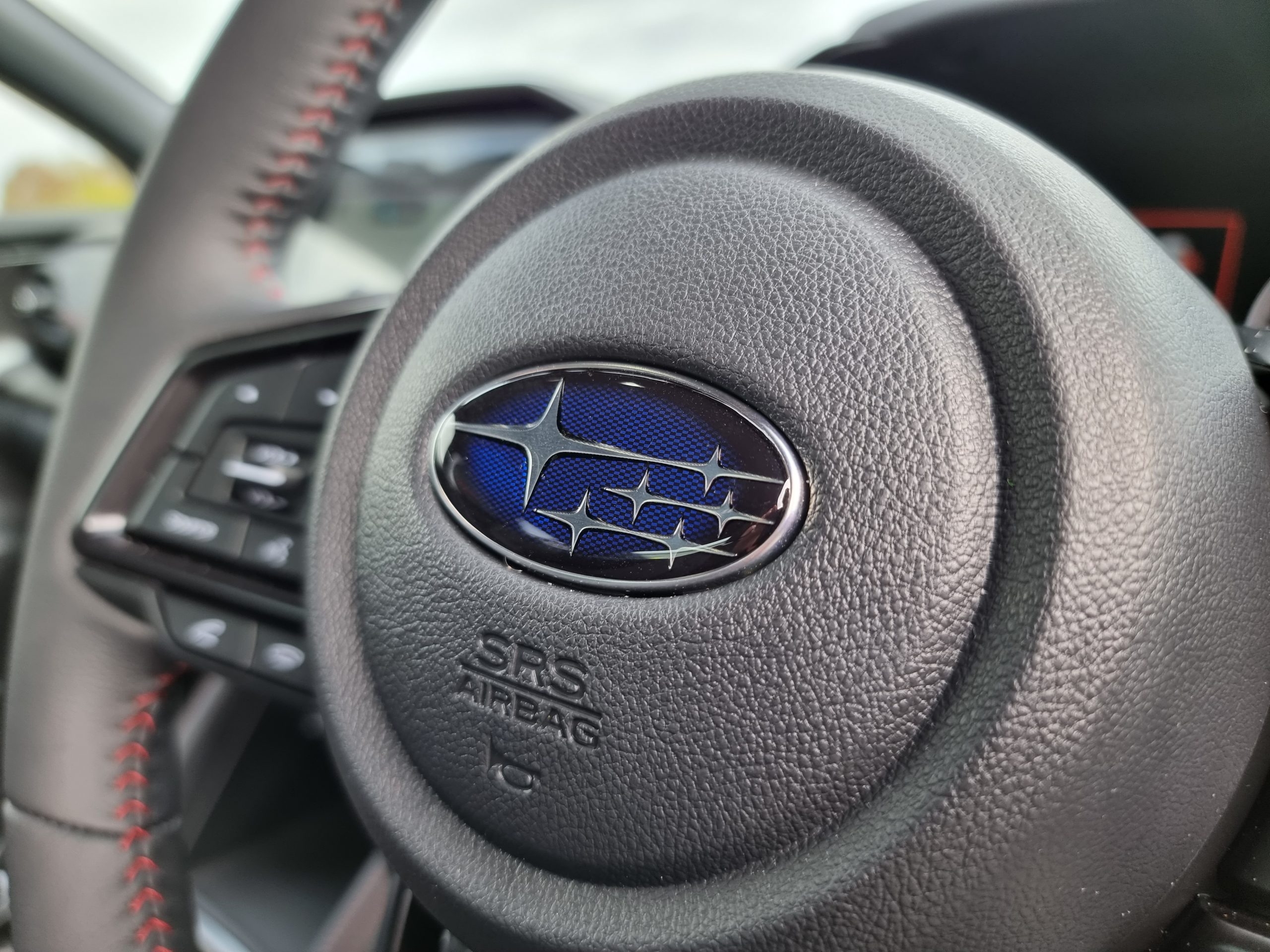
The mid-spec WRX RS sedan (manual: $50,490, automatic: $54,490)/GT Sportswagon ($55,490) then adds suede upholstery, a 10-speaker Harmon Kardon sound system, eight-way electrically adjustable front seats with driver’s memory and lumbar adjustment, heated front and rear seats, heated mirrors with puddle lamps, satellite navigation, front and side cameras, driver attention monitoring with facial recognition, auto high beam for the manual, ambient interior lighting for the sedan, two rear USB ports, an auto-dimming rear mirrors and a CD player.
The WRX GT Sportswagon changes the sedan’s suede upholstery for leather and adds a hands-free tailgate.
The top-spec auto-only WRX tS (sedan: $56,990, wagon: $57,990) adds more drive modes, adaptive dampers, unique 18-inch alloy wheels, felt-lined door pockets, tS exterior badging and an STi-badged steering wheel and instrument cluster.
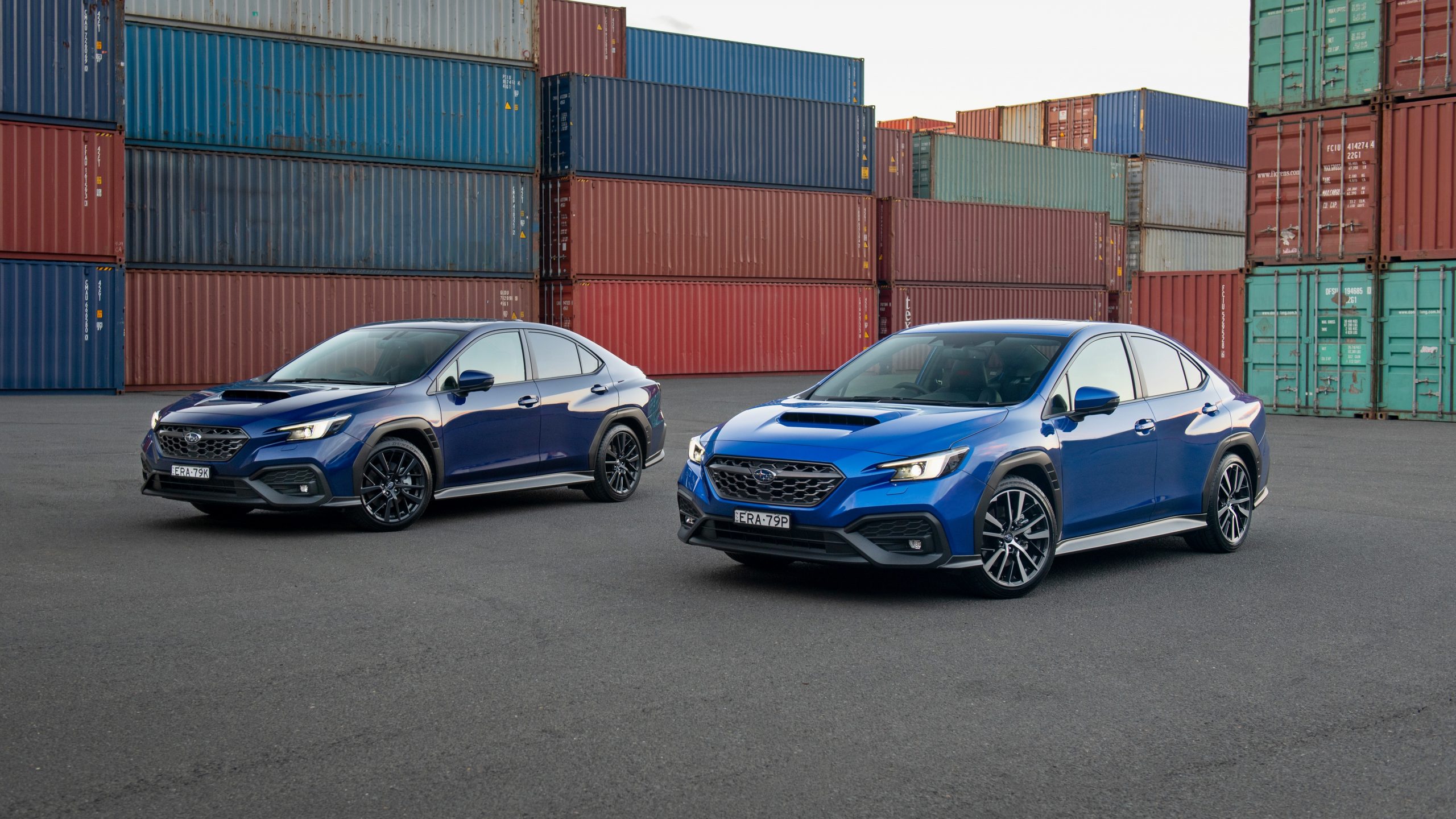
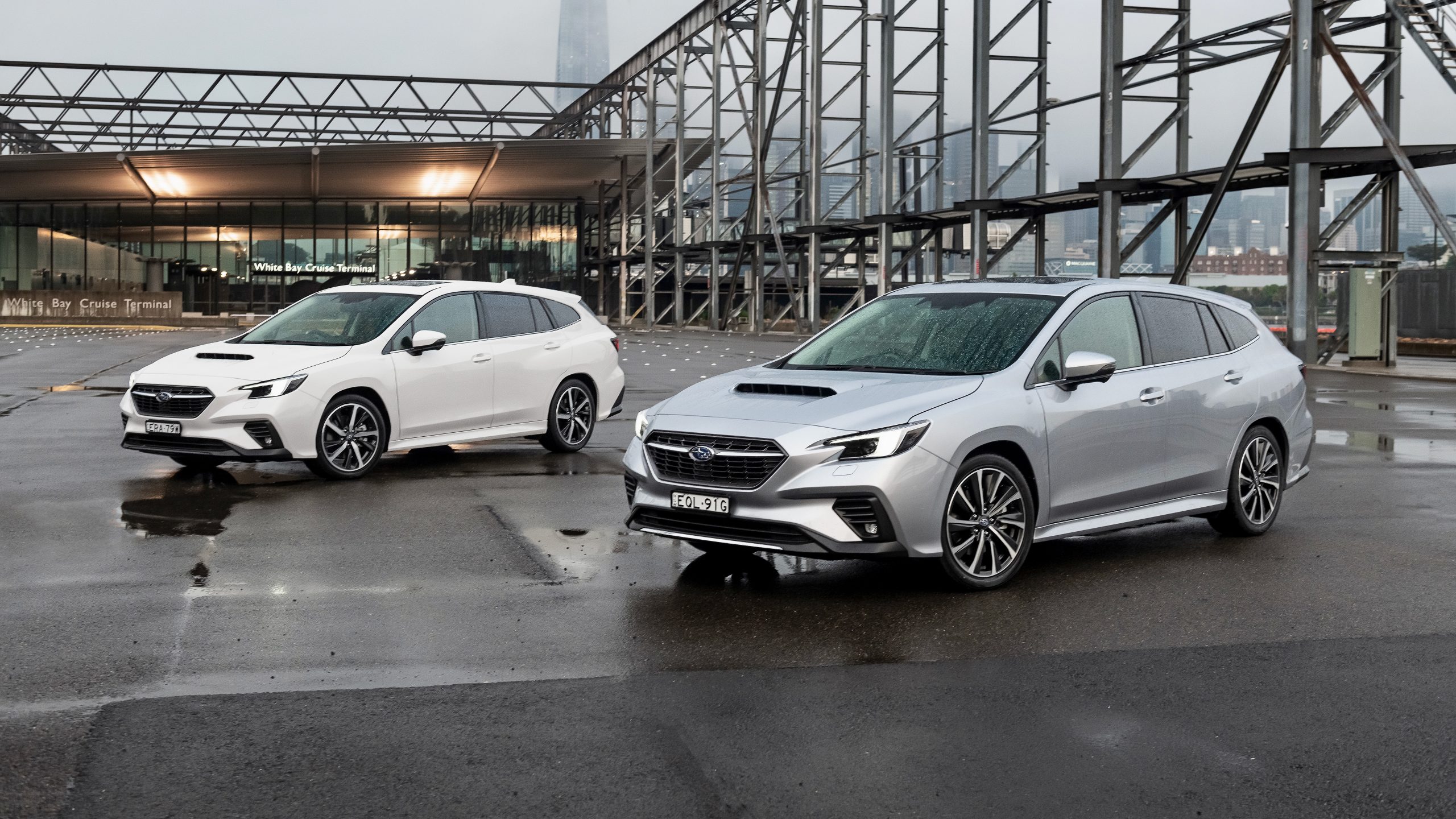
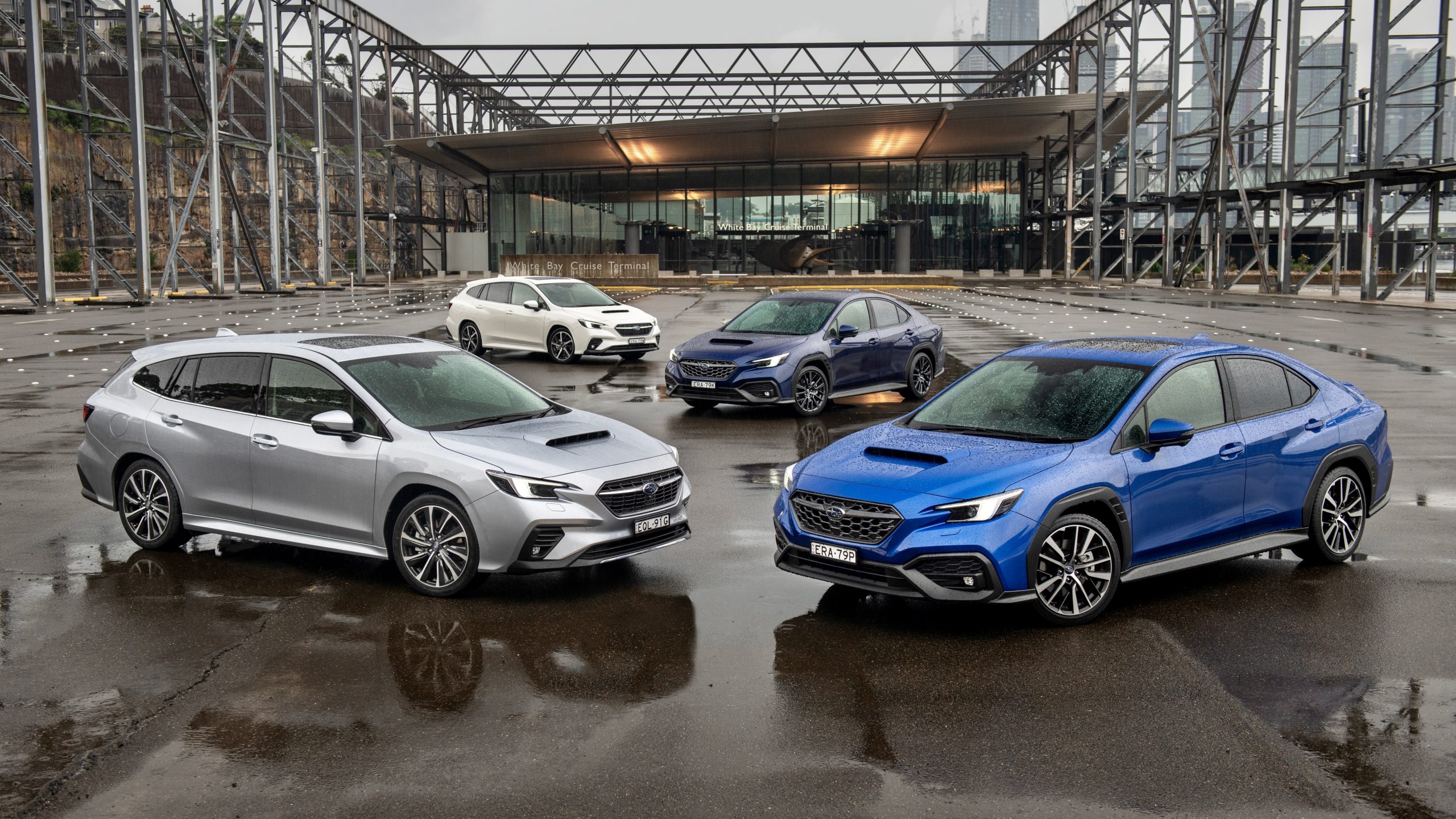
Colour options for the 2023 Subaru WRX range include ‘WR Pearl Blue’, ‘Ignition Red’, ‘Sapphire Blue Pearl’, ‘Ice Silver’, ‘Magnetic Grey’ and ‘Crystal Blue’. Sedan-specific colours include ‘Solar Orange’ and ‘Ceramic White’, while wagon buyers can exclusively choose ‘Crystal White’. All colours are no-cost options and the only interior options are black cloth for the base model, black and grey suede for the RS and tS sedan, black leather for the GT Sportswagon and black suede for the tS Sportswagon.
Rivals for the WRX are far wider ranging than the traditional Mitsubishi Lancer Evolution (R.I.P) – these days there are the Hyundai i30 N, Volkswagen Golf GTI, Ford Focus ST, Renault Megane RS, Toyota GR Yaris and upcoming GR Corolla to consider. And with the WRX Sportswagon, options like the Skoda Octavia RS, Mazda6 2.5L turbo and Volkswagen Golf R wagon also exist.
Performance & Economy:
Under the bonnet of the 2024 Subaru WRX sedan sits a newly-developed 2.4-litre turbocharged four-cylinder ‘Boxer’ engine producing 202kW of power and 350Nm of torque. It’s mated to either a six-speed manual transmission, or a new ‘Subaru Performance Transmission’, which is a CVT automatic with eight stepped ratios. Performance figures are yet to be released, but expect both models to make the 0-100km/h sprint in around 6 seconds, or slightly slower than a Hyundai i30 N.
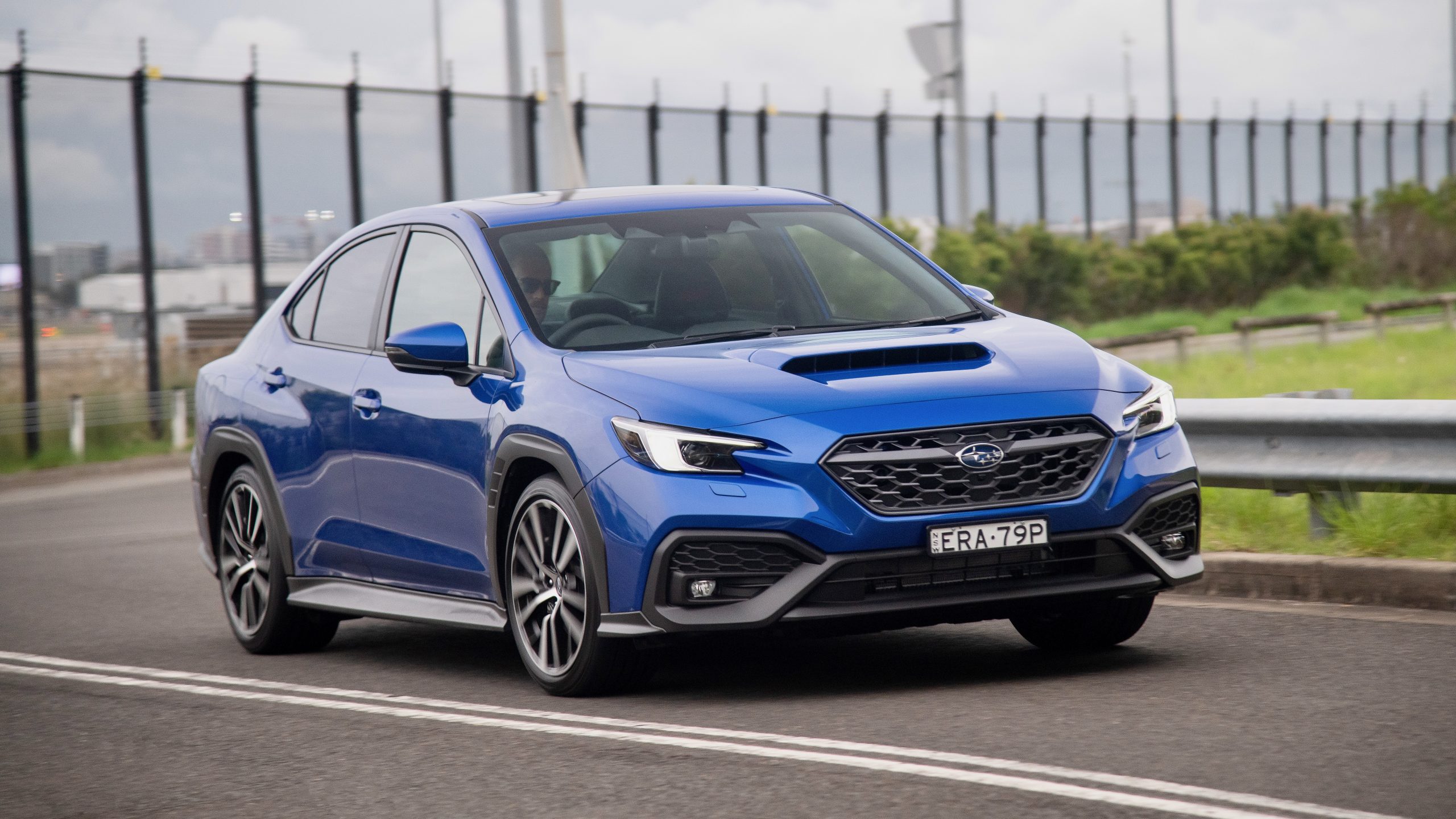
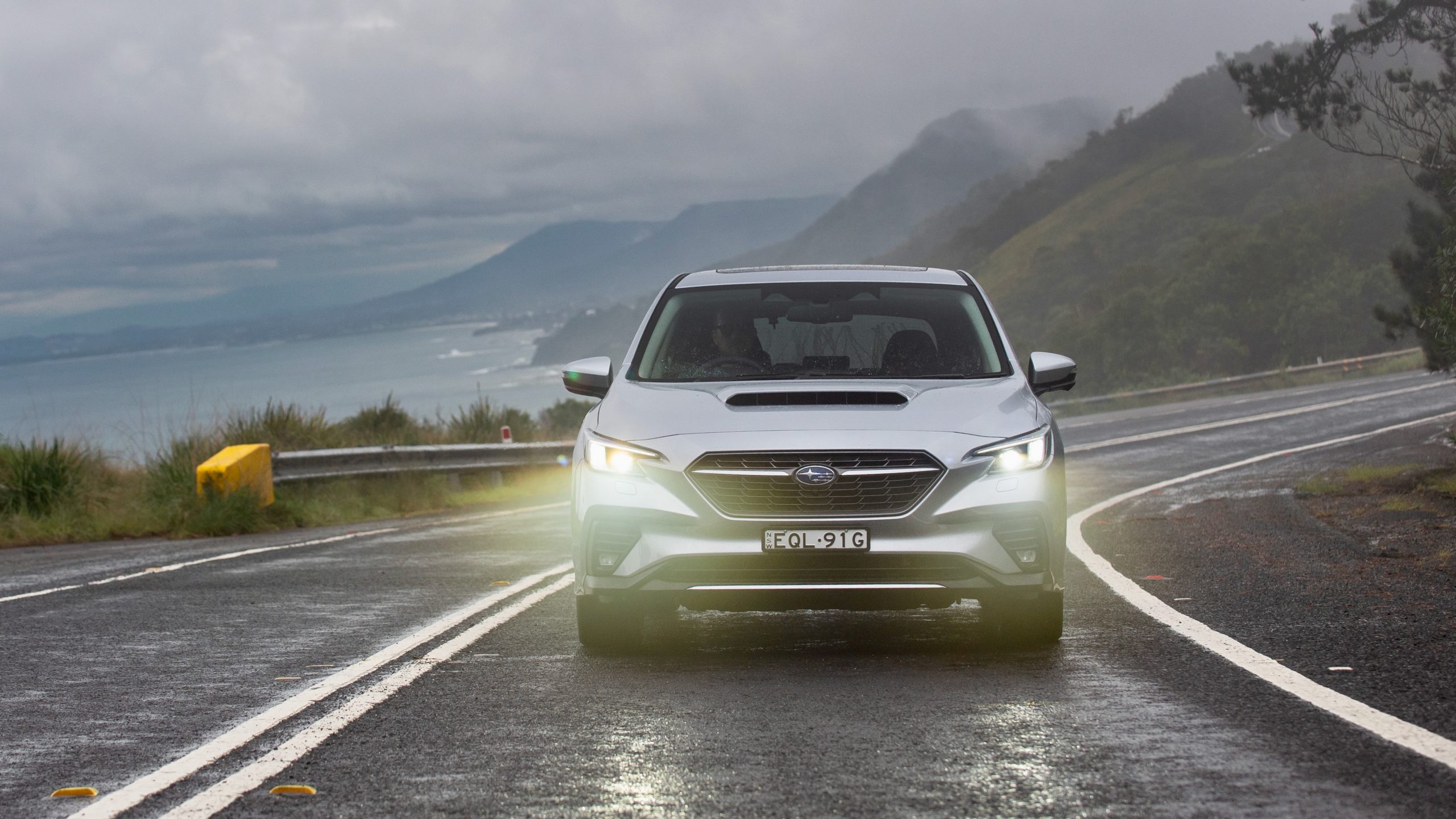
The new WRX engine does the job and is quick on the road with both transmissions. Thanks to new valve seats and a clever turbocharging system, the engine spins freely all the way to a rather early 6,000 rpm redline. It lacks the outright low-end grunt of some of the best four cylinder turbocharged engines and is also down on torque compared to its rivals. A Volkswagen Golf GTI makes 380Nm v the WRX’s 350Nm, despite having a smaller 2.0 litre four-cylinder unit under its bonnet.
We were also rather disappointed by the complete lack of noise this engine makes, which is something of a traditional WRX strong point. The refinement levels are so high, it barely makes itself heard until well over 4,000rpm. Exhaust noises are non existent either, even if the WRX sedan does have a quad exhaust set-up at the rear.
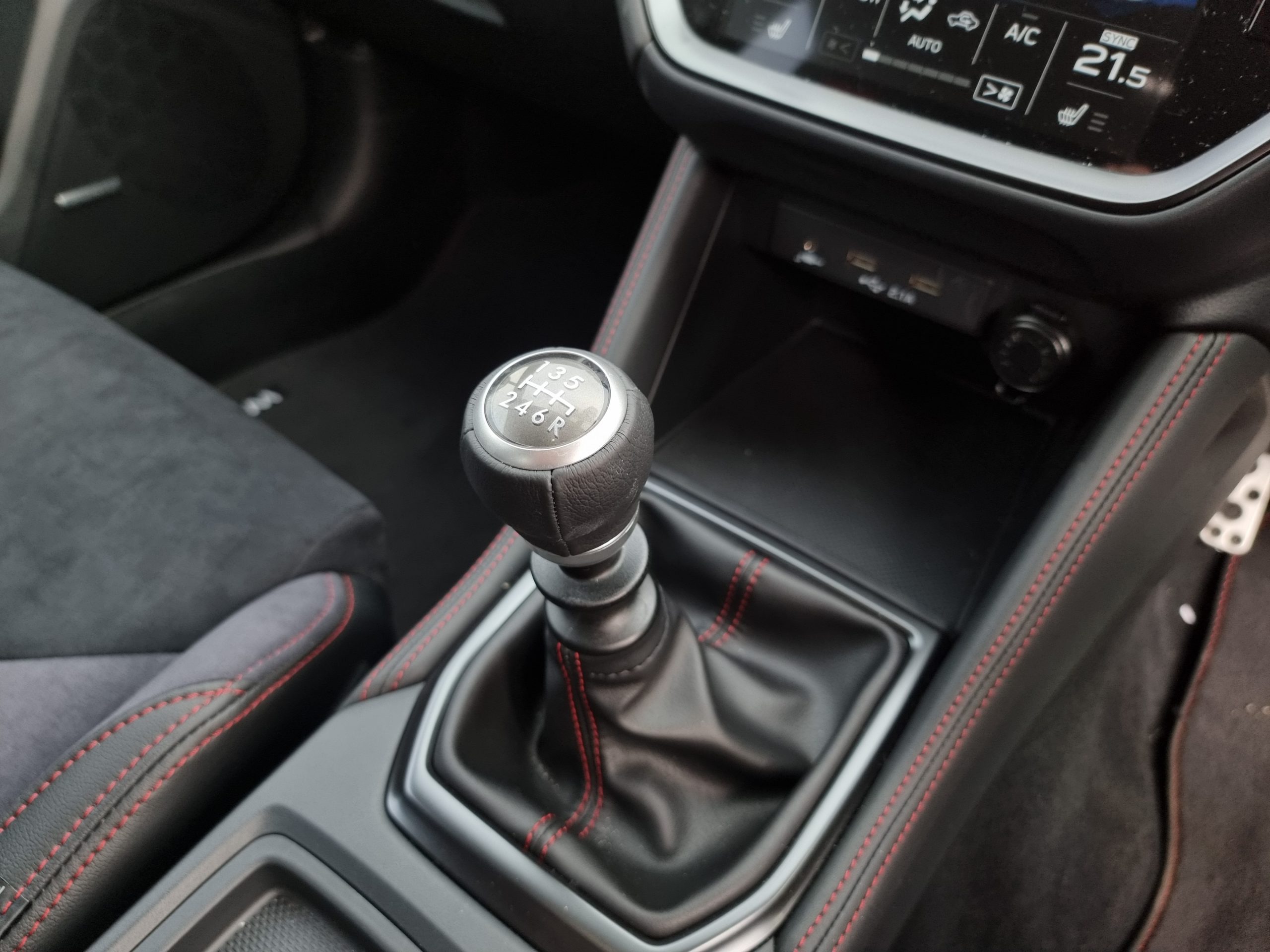
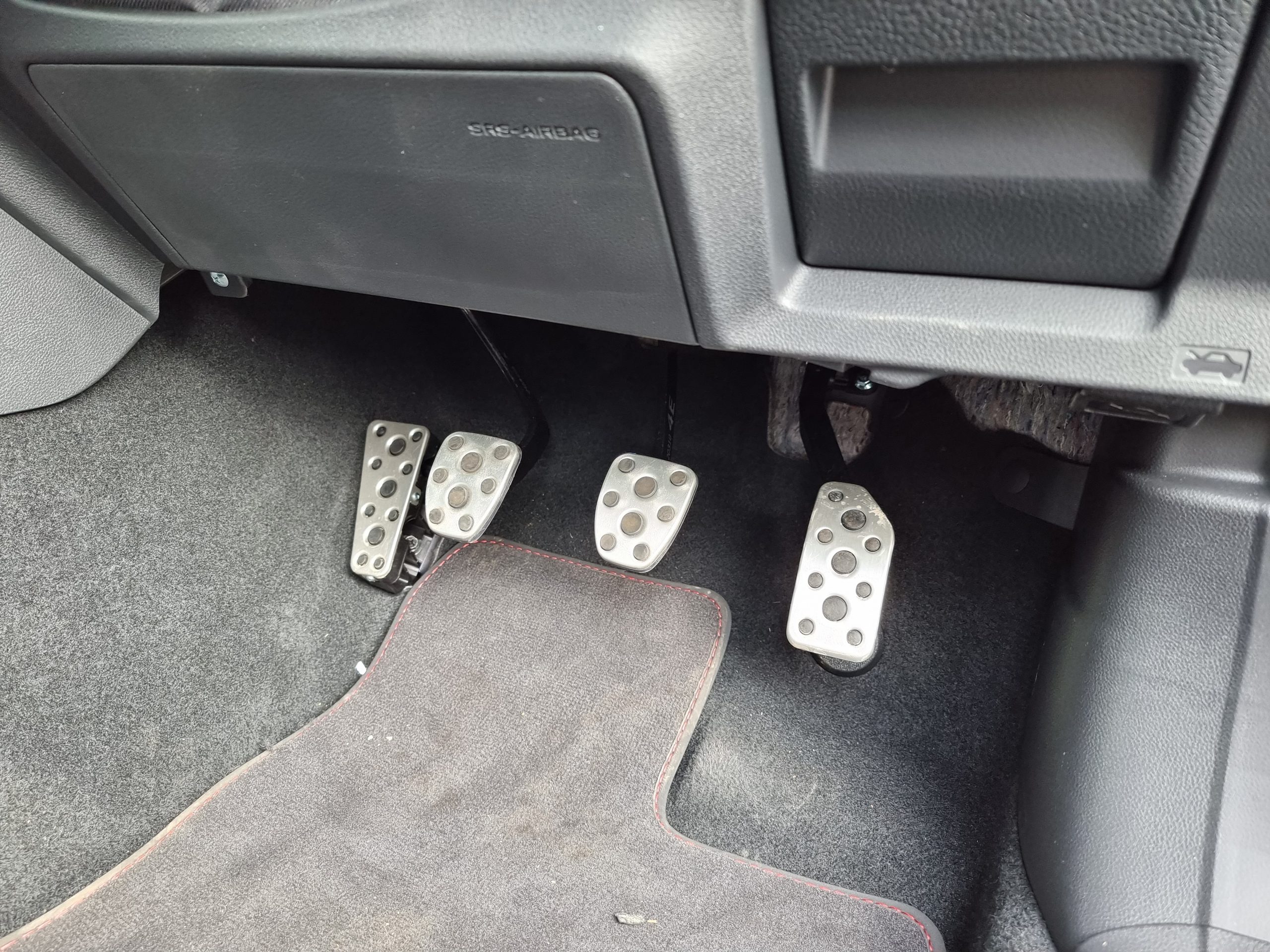
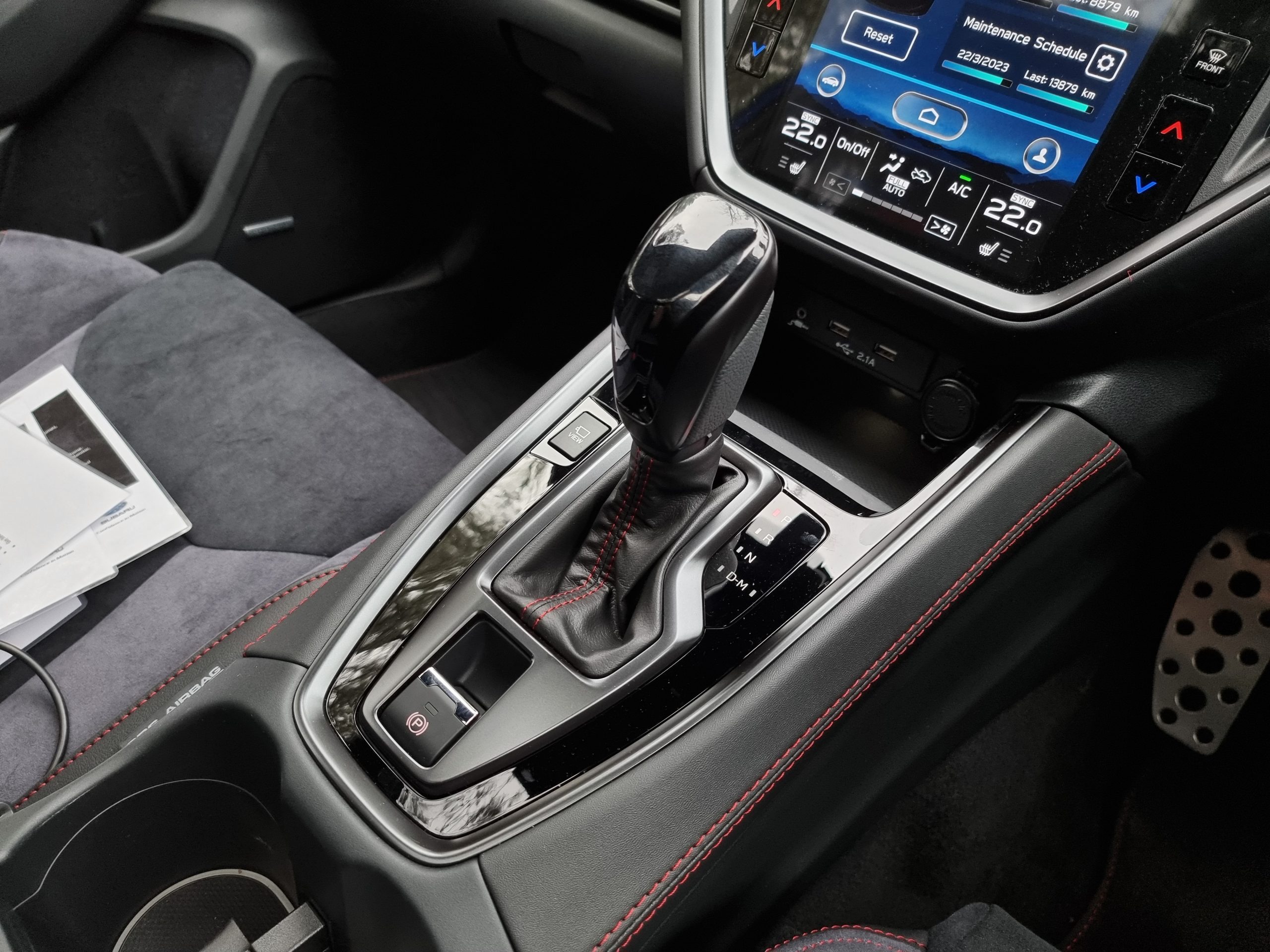
The two transmissions are generally good, with the manual being the pick of the two. Throughout the launch, Subaru made bold claims that the new CVT automatic is exceptional in its operation with improved hardware and software to deliver 30% faster upshifts and 50% faster downshifts. In reality however, a spade is a spade and a CVT will always lack the direct feel of the best automatics on the block. Sure, it’s smooth and docile when driven sedately, but the WRX’s automatic cannot seem to offer the level of purity enthusiasts want in a performance car. An i30 N auto or Skoda Octavia RS offer a more engaging driving experience when fitted with their dual-clutch automatics.
The manual transmission shifts smoothly, with a clean clutch action and is the purist’s choice in the WRX range. Subaru claims to have worked hard on reducing unwanted noise and improving shift feel compared to the outgoing unit. Both on the track and through winding roads, the manual proved to be a delight, offering the direct feel we would expect from Subaru’s finest.
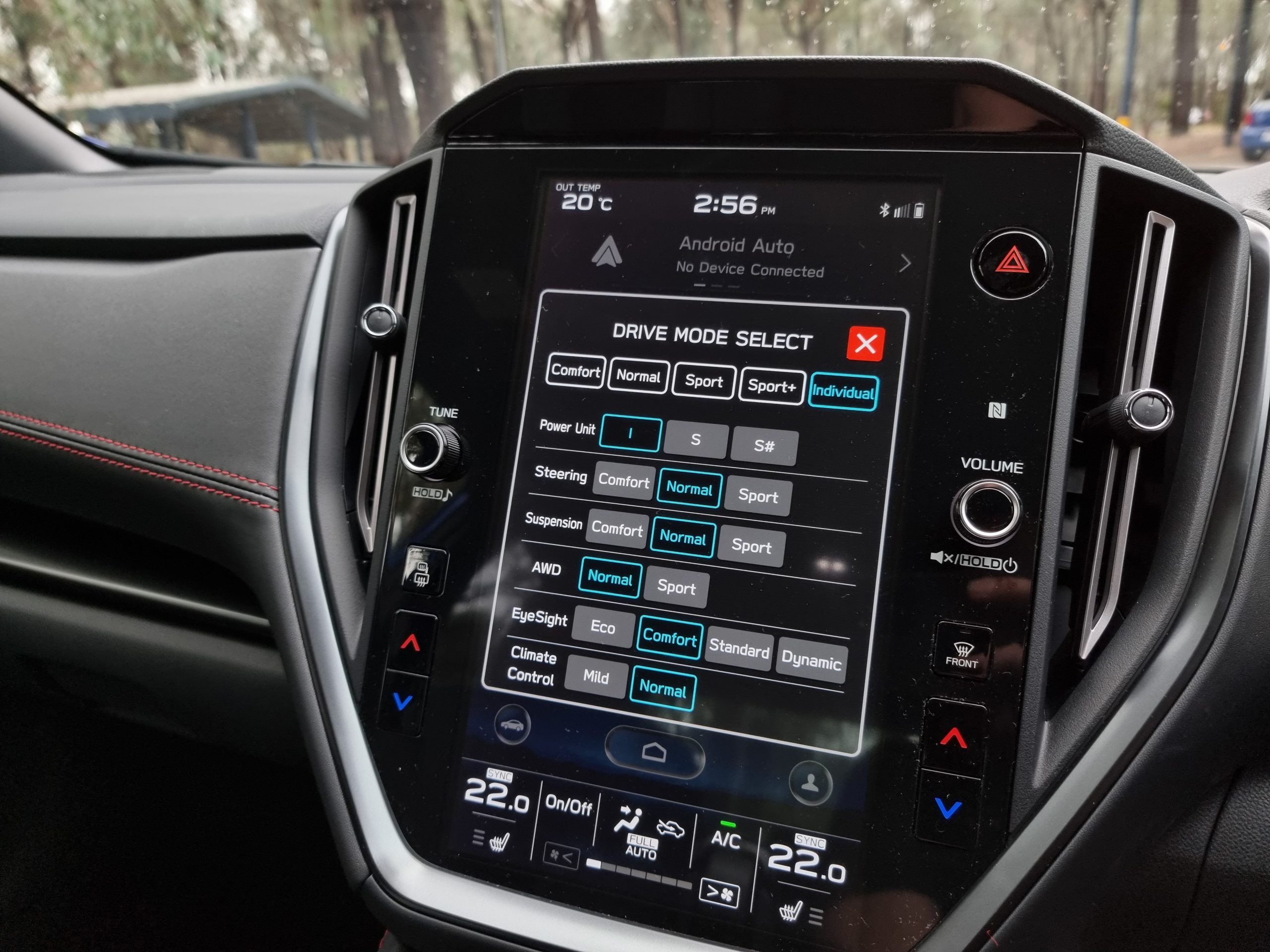
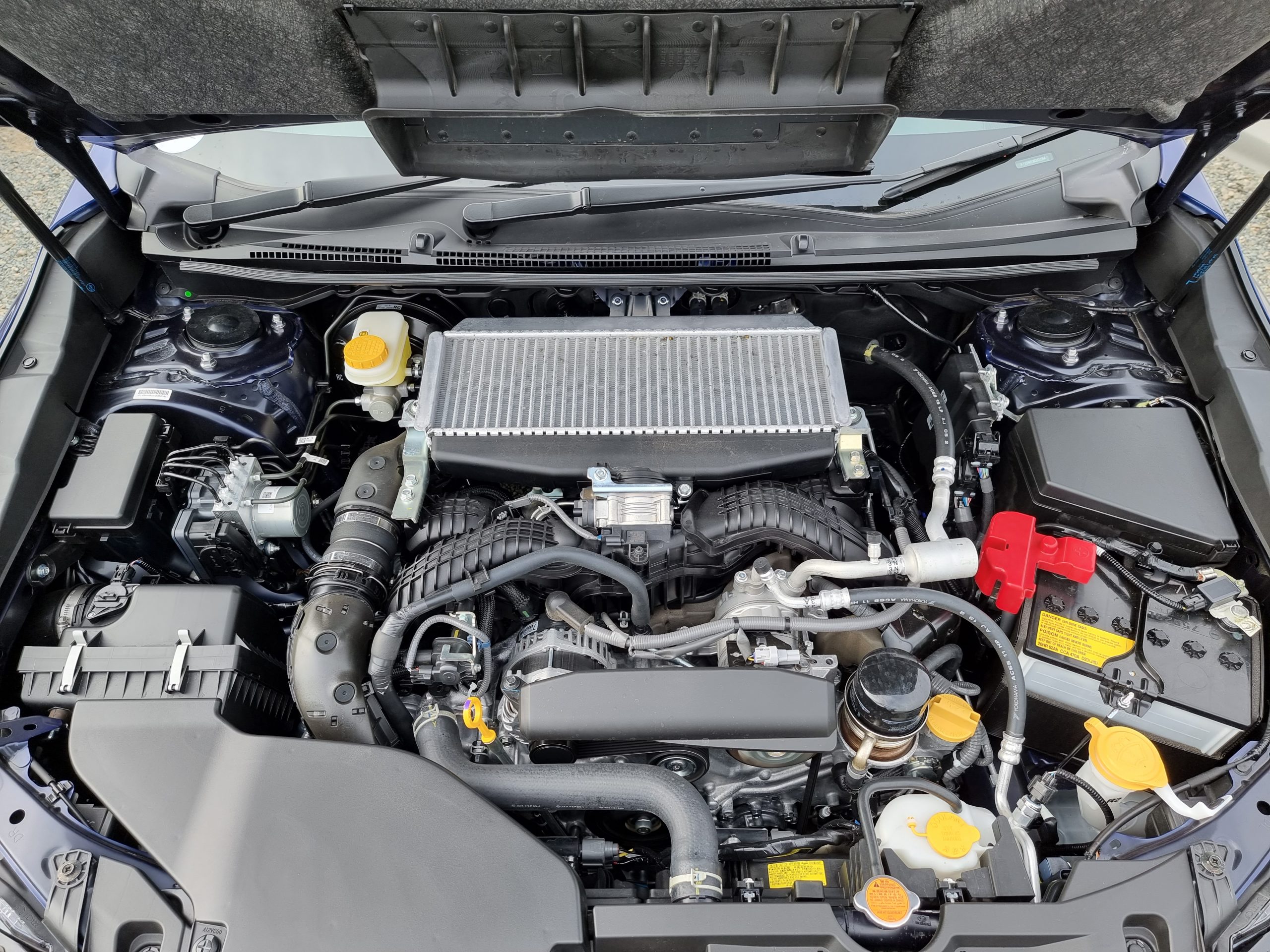
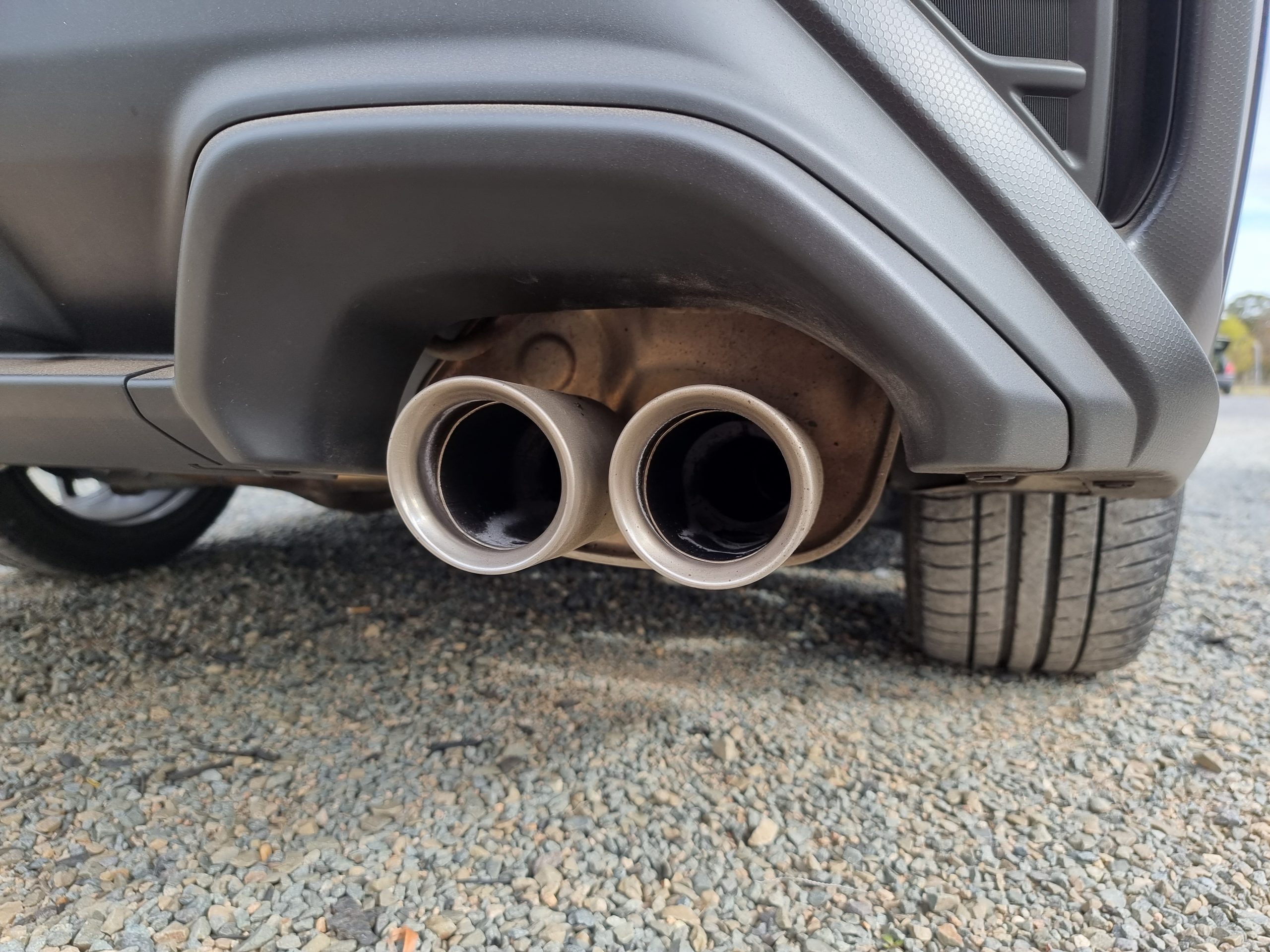
Subaru claims combined fuel consumption of 9.9L/100km for the manual, 8.5L/100km for the automatic and we saw quite a lot worse in both variants on the launch but we’re planning to have both transmissions in the DiscoverAuto garage soon for further testing. Freeway stints at 110km/h would see fuel consumption in the vicinity of 10L/100km while backroad blasts easily saw that go into the teens.
Ride & Handling:
Like every Subaru model – bar the wonderful BRZ – the 2023 WRX rides on Subaru’s Global Platform which promises improved structural rigidity to enable a better driving experience. Engineers tell us the new WRX in stiffer by 28 percent than before, with even larger gains made in areas of local stiffness. This reduction in chassis flex should lead to improved handling, and it’s true – the 2023 Subaru WRX feels substantially more refined and solid on the road than before, with a planted feel through corners.
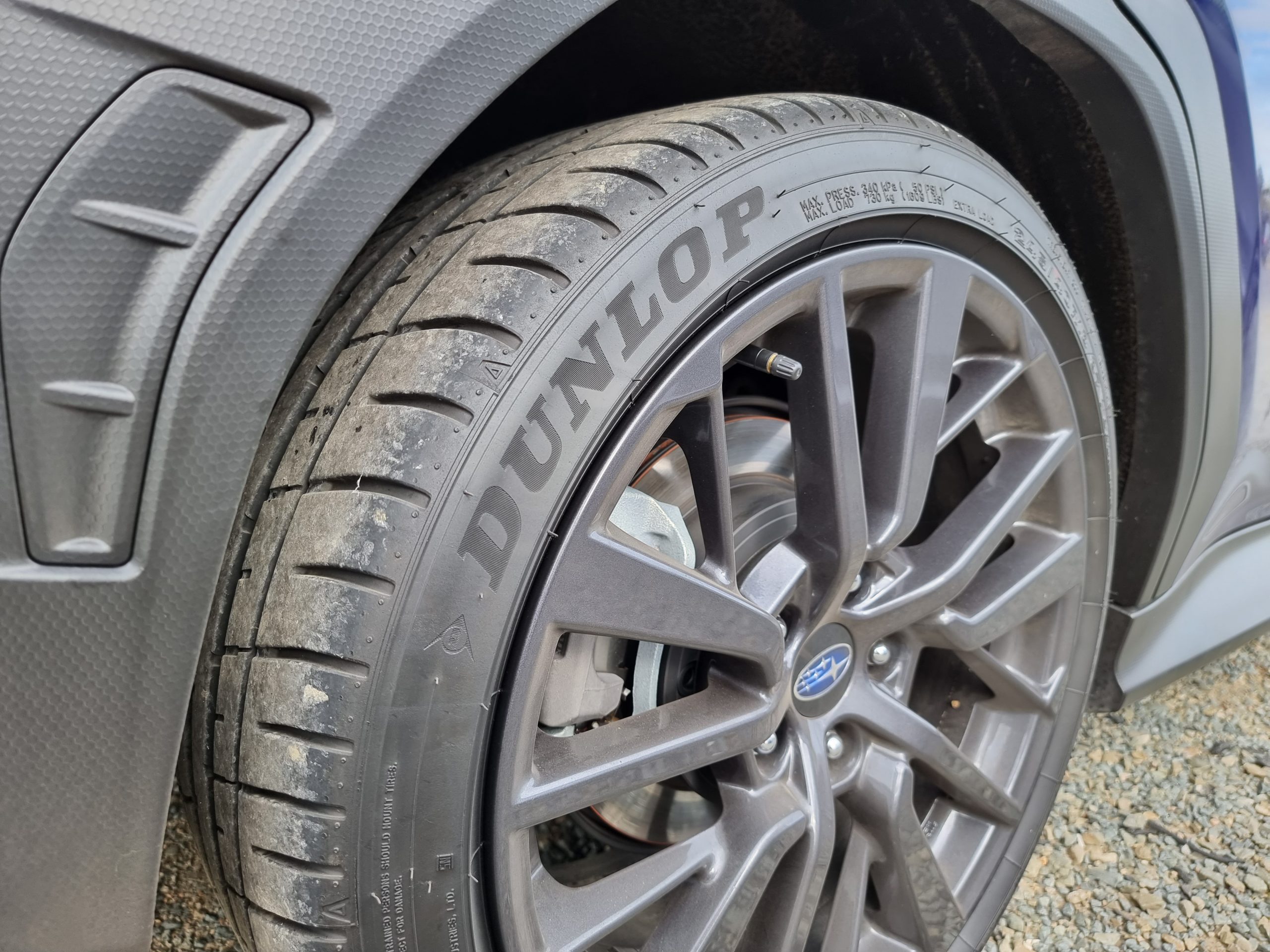
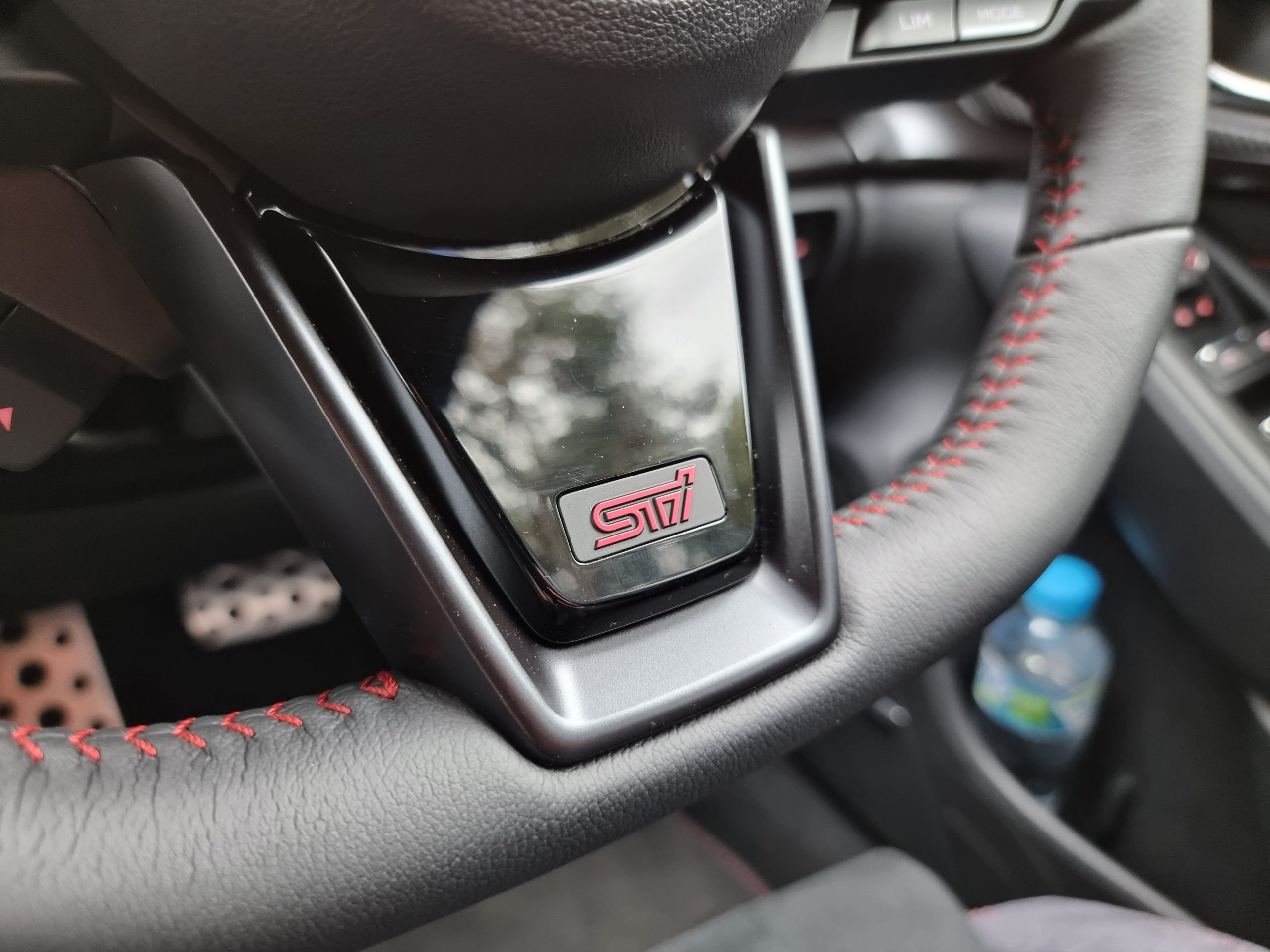
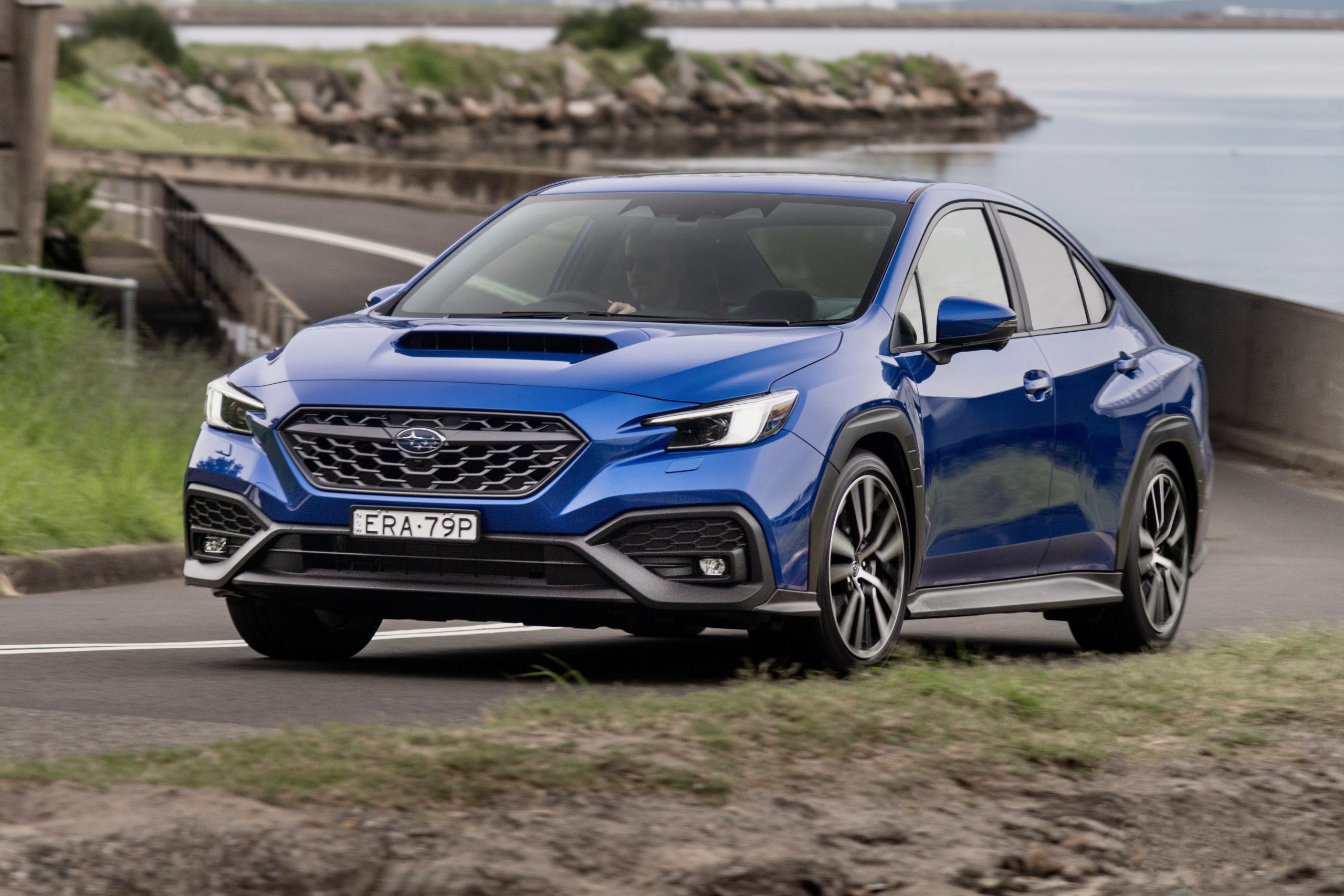
The WRX’s rigid body is paired with MacPherson strut suspension up front and a complex double-wishbone setup in the rear. Most models come with passive dampers but flagship tS variants (which are automatic only) add adaptive dampers, along with a more advanced drive mode selection system. Both damper systems work well, with the adaptive dampers adding an extra layer of ability to the WRX’s talent. In their softest setting the dampers soak up road imperfections admirably, and firm up progressively when needed to deliver sharper responses and a sharper driving experience. Shame they’re only available with the automatic.
On a twisty road through the Victorian High Country, the WRX sedan felt planted and predictable. With its 245mm wide Dunlop Sport Maxx GT tyres and Subaru’s torque-vectoring all-wheel-drive system, the WRX sedan proved to have bags of grip through corners, hanging on tenaciously even over jagged bumps and less than ideal road surfaces. During a brief stint at Winton Raceway, the WRX sedan proved itself with loads of grip and an AWD system which allows the driver to get on the power just past the apex in a corner.
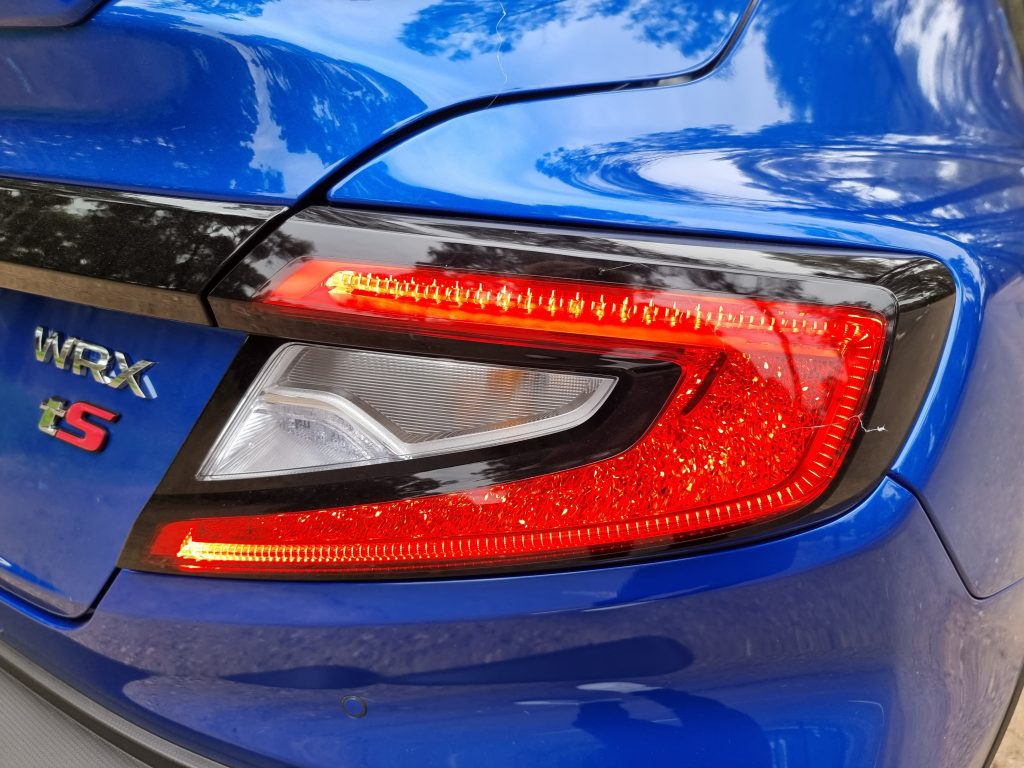
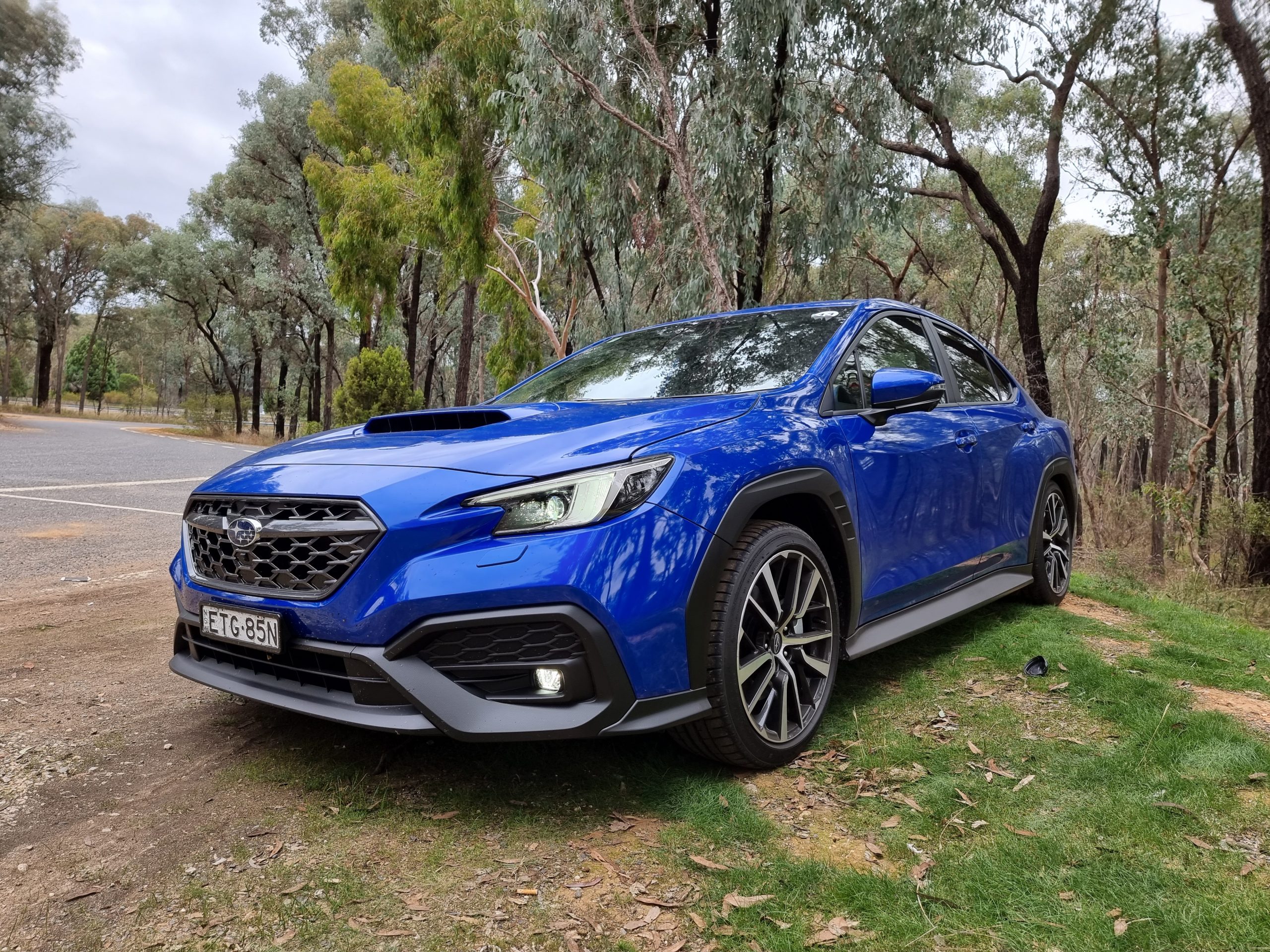
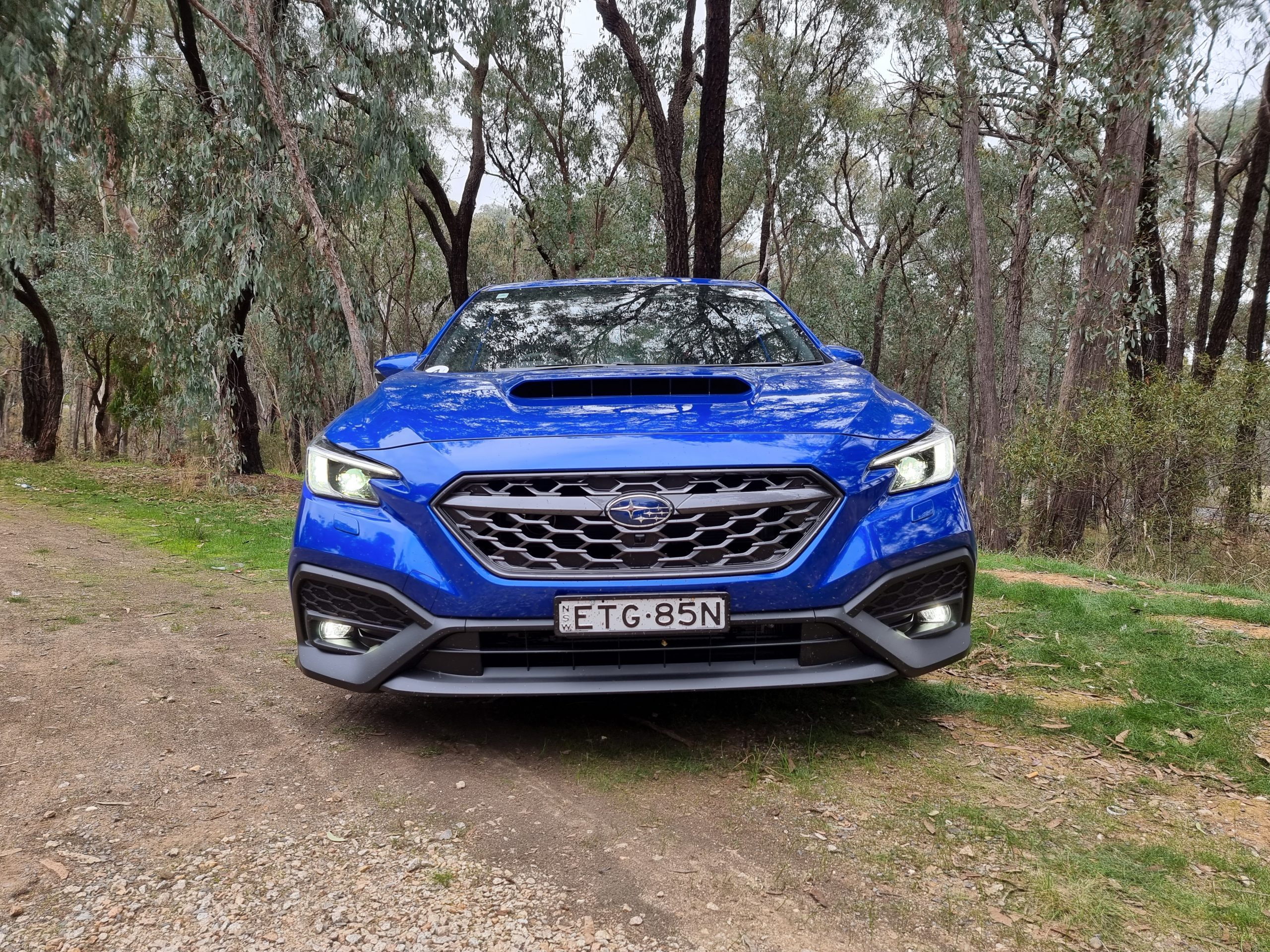
A main letdown of the entire package however, is the WRX’s new electric power steering rack which gives drivers a numb and distant feel of what the front wheels are doing. This means the car never feels as intimate as it should, detracting from the WRX’s appeal.
Despite what Subaru says, the 2023 Subaru WRX Sportswagon is a completely different beast to the WRX sedan dynamically. It features skinnier 225mm wide Yokohama eco tyres, softer springs and dampers and weighs a whopping 100kg more than the already porky sedan. All of this means that the WRX Sportswagon isn’t the sharpest tool in the shed, with average dynamics and a slightly lackluster feel on the road. An Octavia RS wagon feels both more alive and agile.
The 2023 Subaru WRX has however found new talent in the way it rides and in its refinement levels. Wind noise is kept at bay, and tyre roar isn’t too pronounced. The ride comfort on all models is decent too, and borders on firm at times. We found that the suspension can rebound aggressively, reminiscent of a pogo stick at times.
Interior & Practicality:
The 2023 Subaru WRX’s cabin is generally a nice place to spend time and is a big improvement on the lacklustre previous generation. Subaru’s new 11.6-inch touchscreen, which takes up a massive section of the dashboard is a modern touch to the interior. It features Apple CarPlay and Android Auto, and it’s generally easy to use. We have to say however that the graphics appear rather dated already and the screen itself isn’t the highest quality. Heating and cooling controls are also partly on the touchscreen itself too, meaning adjusting functions like the fan speed or airflow direction can be distracting.
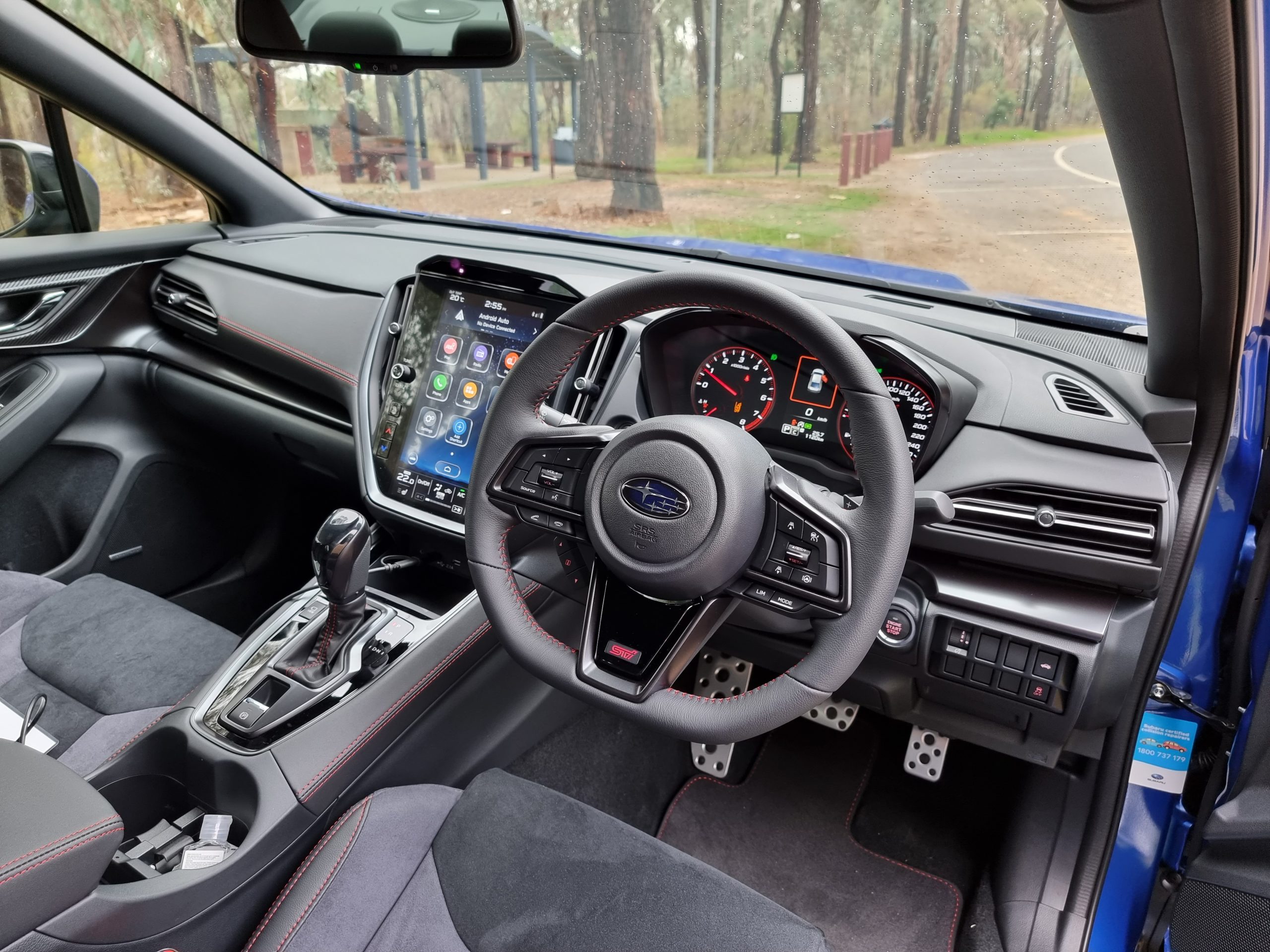
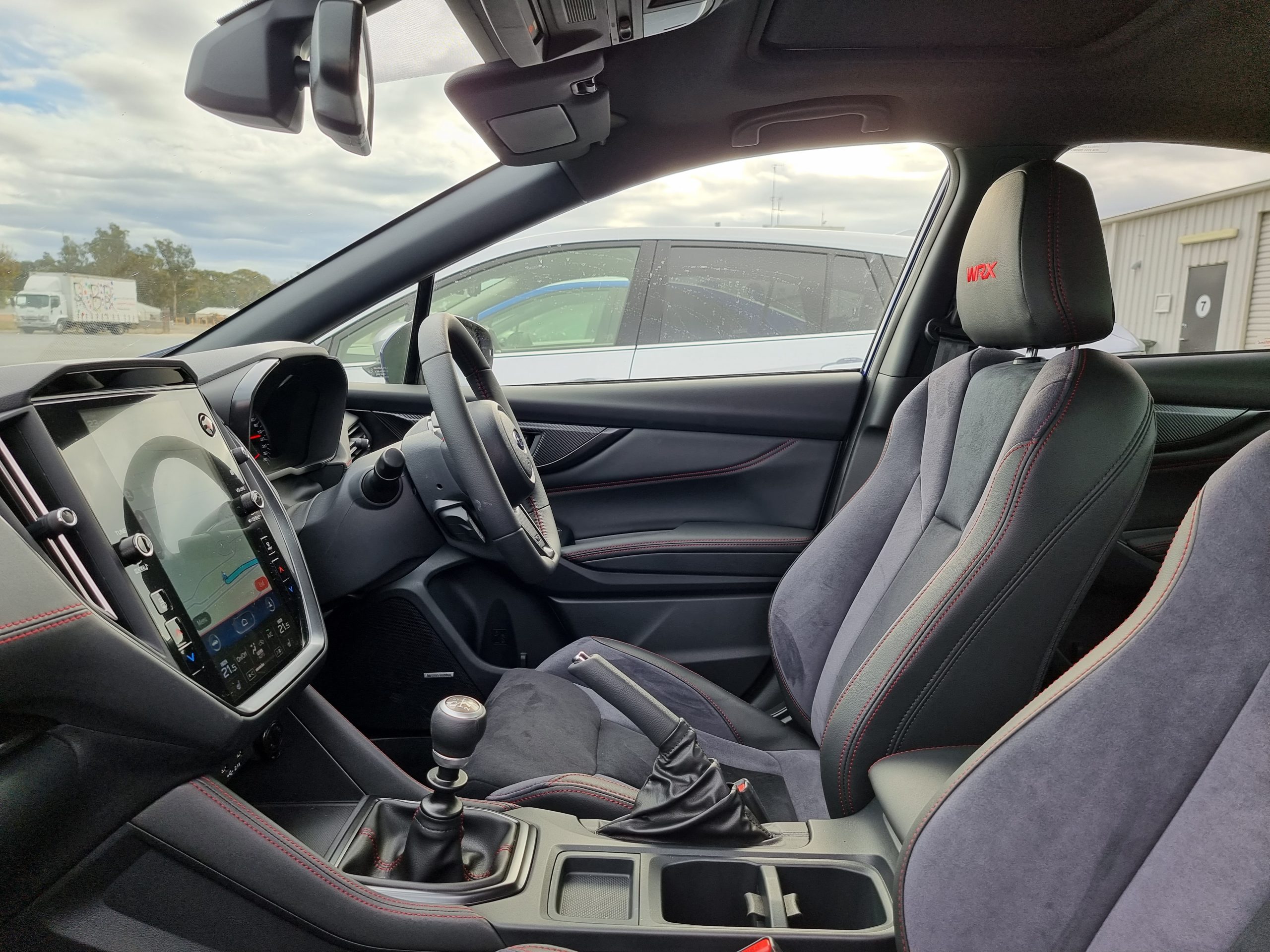
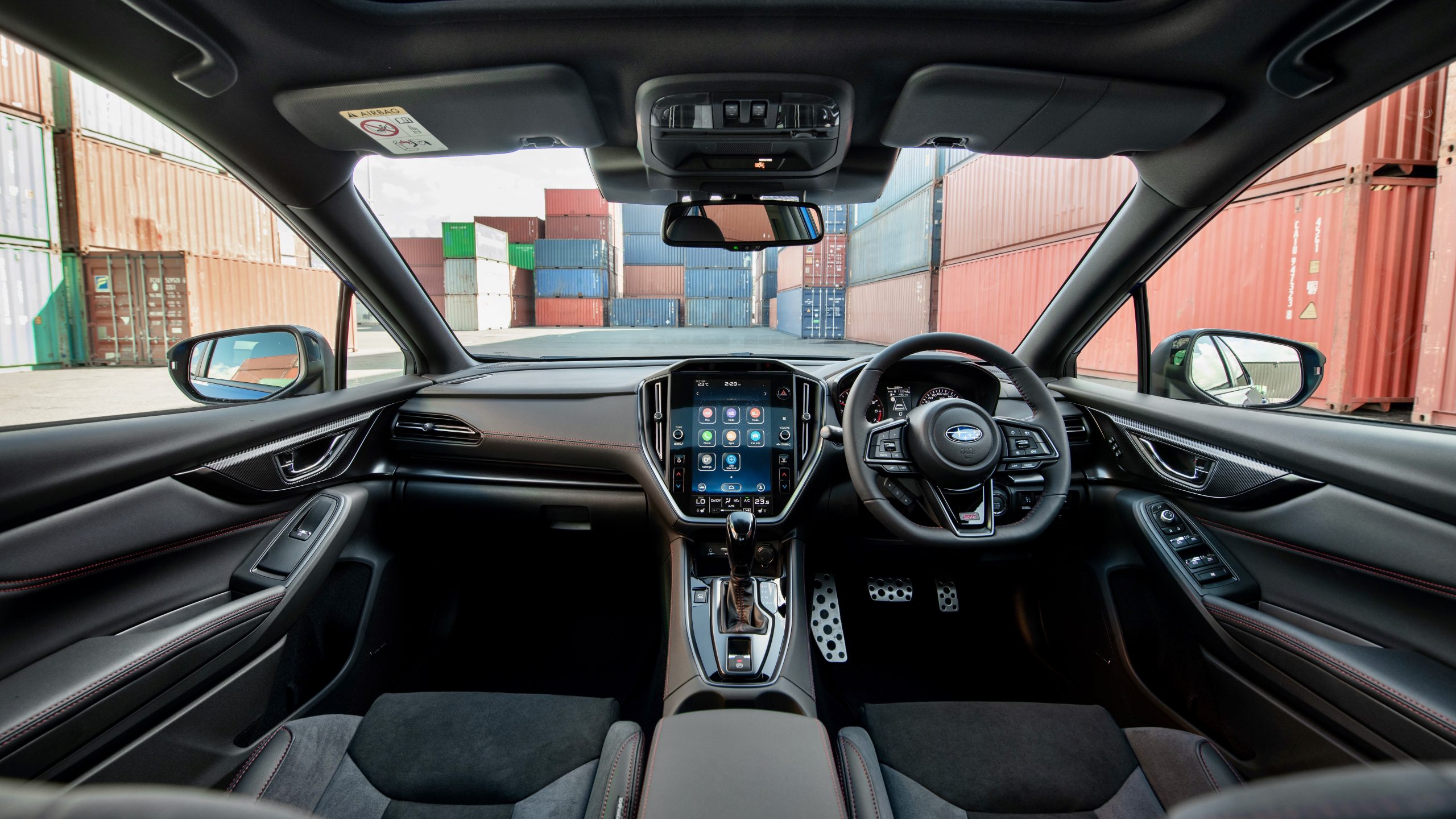
Interior materials are generally decent, with soft touch plastics on the doors, the dashboard and knee-rests up front. Everything feels well made and the materials are both easier on the eyes and nicer to touch – even the fake carbonfibre pieces of trim feel well made.
Space inside the sedan is plentiful, with comfort well taken care of thanks to supportive and comfortable seats. After two full days of driving, the driving position and seats proved to be spot on for more spirited driving, as well as for longer distance freeway cruising. In the backseat, headroom is rather limited due to a lower roofline but kneeroom is plentiful. Passengers can really stretch out in the back of the WRX and are well looked after with USB ports and an armrest, even if rear air vents are missing for manual variants.
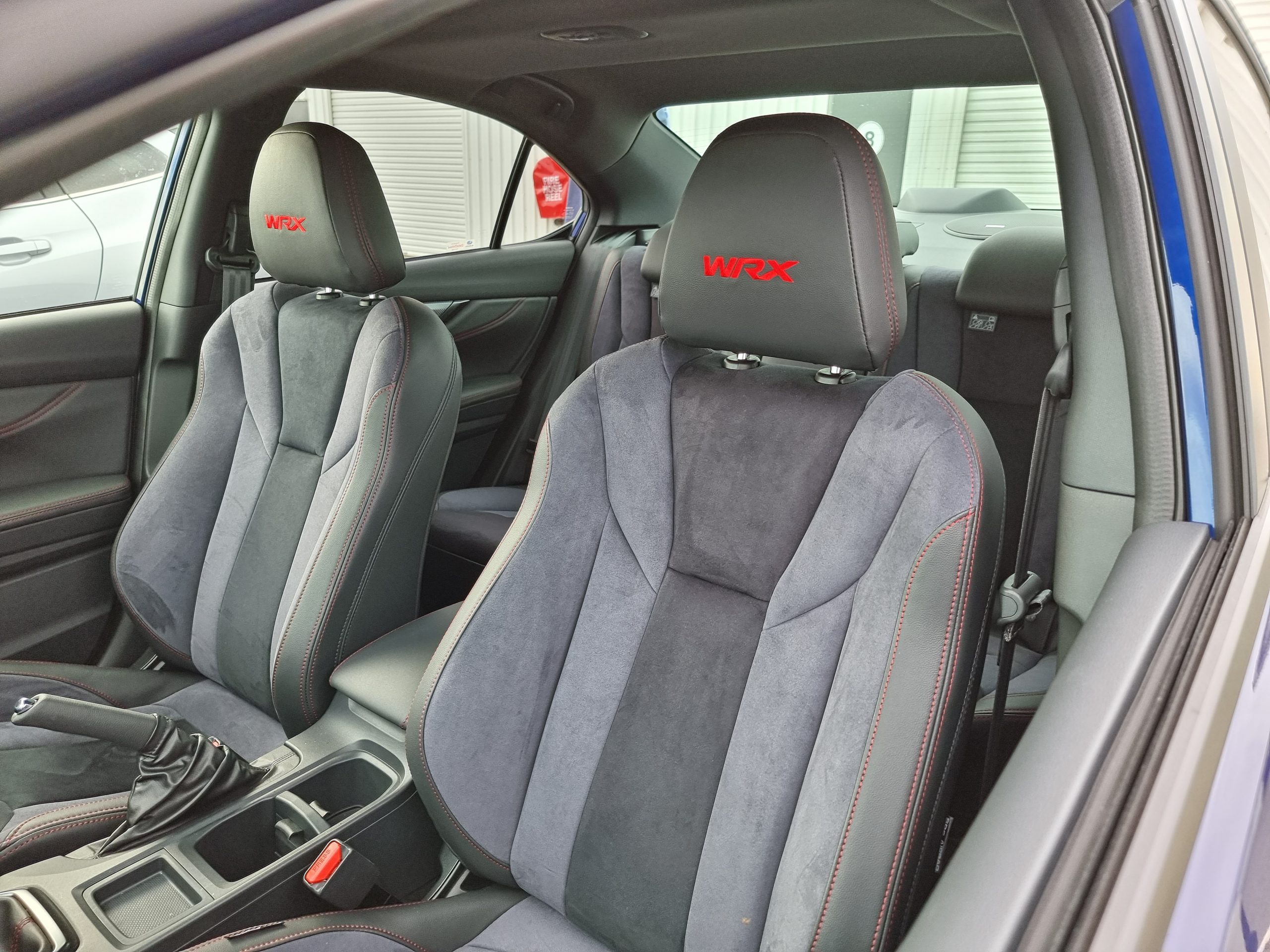
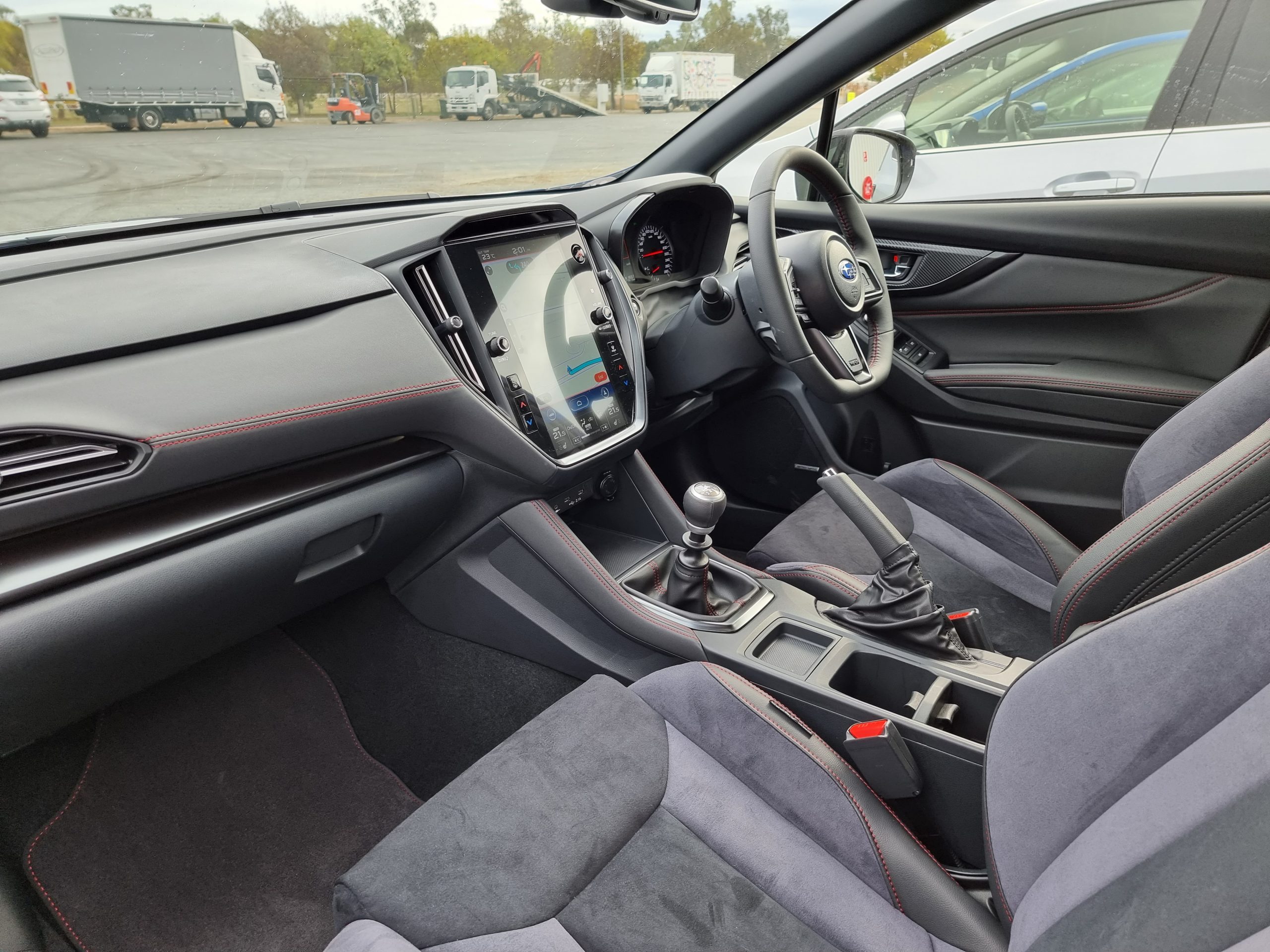
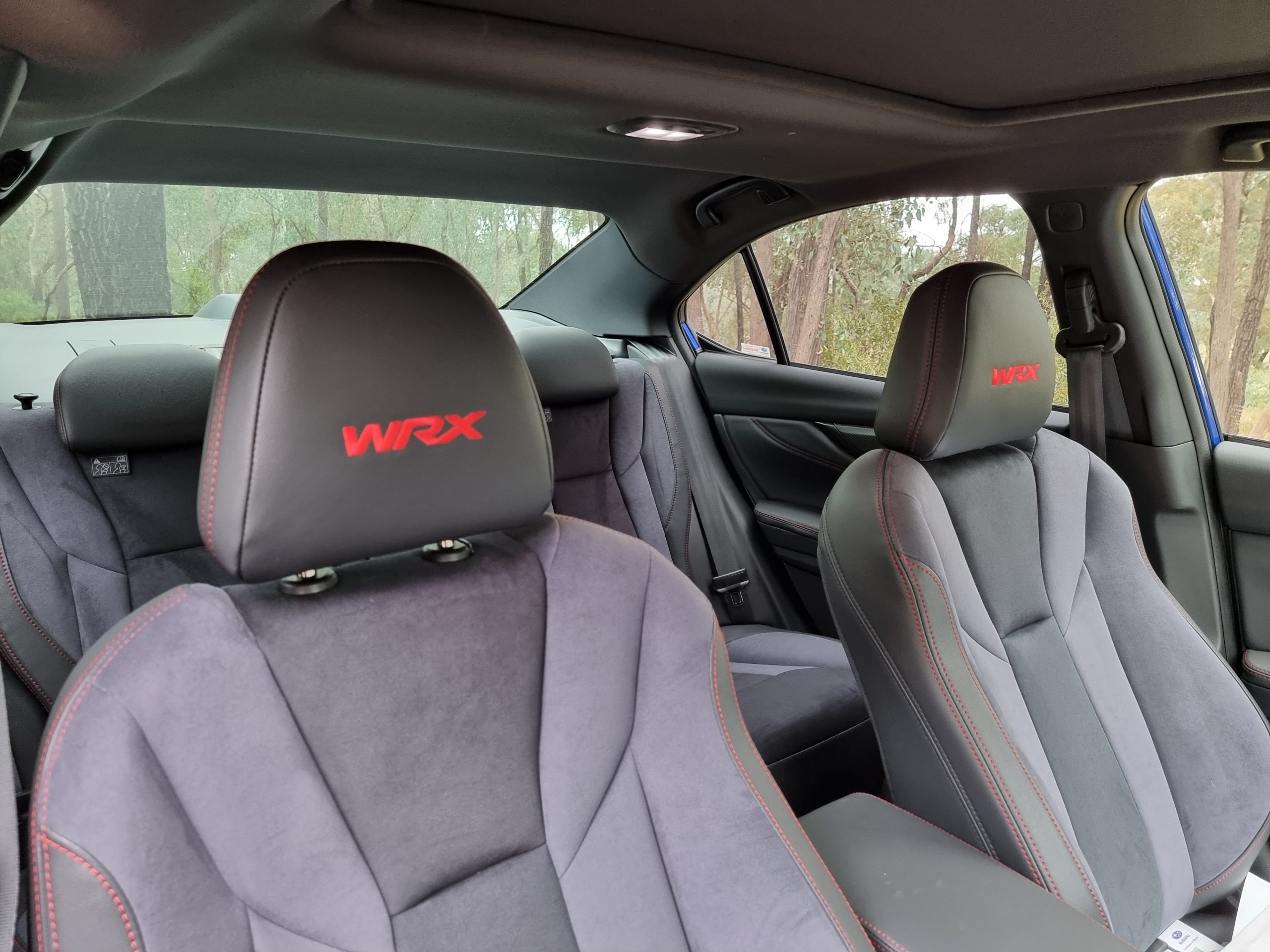
Storage inside is good too, with a large glovebox and centre console, felt lined door bins in higher-spec variants and plenty of cubbies dotted around the cabin. Storage for larger phones is limited however, as they simply don’t fit in the area under the touchscreen.
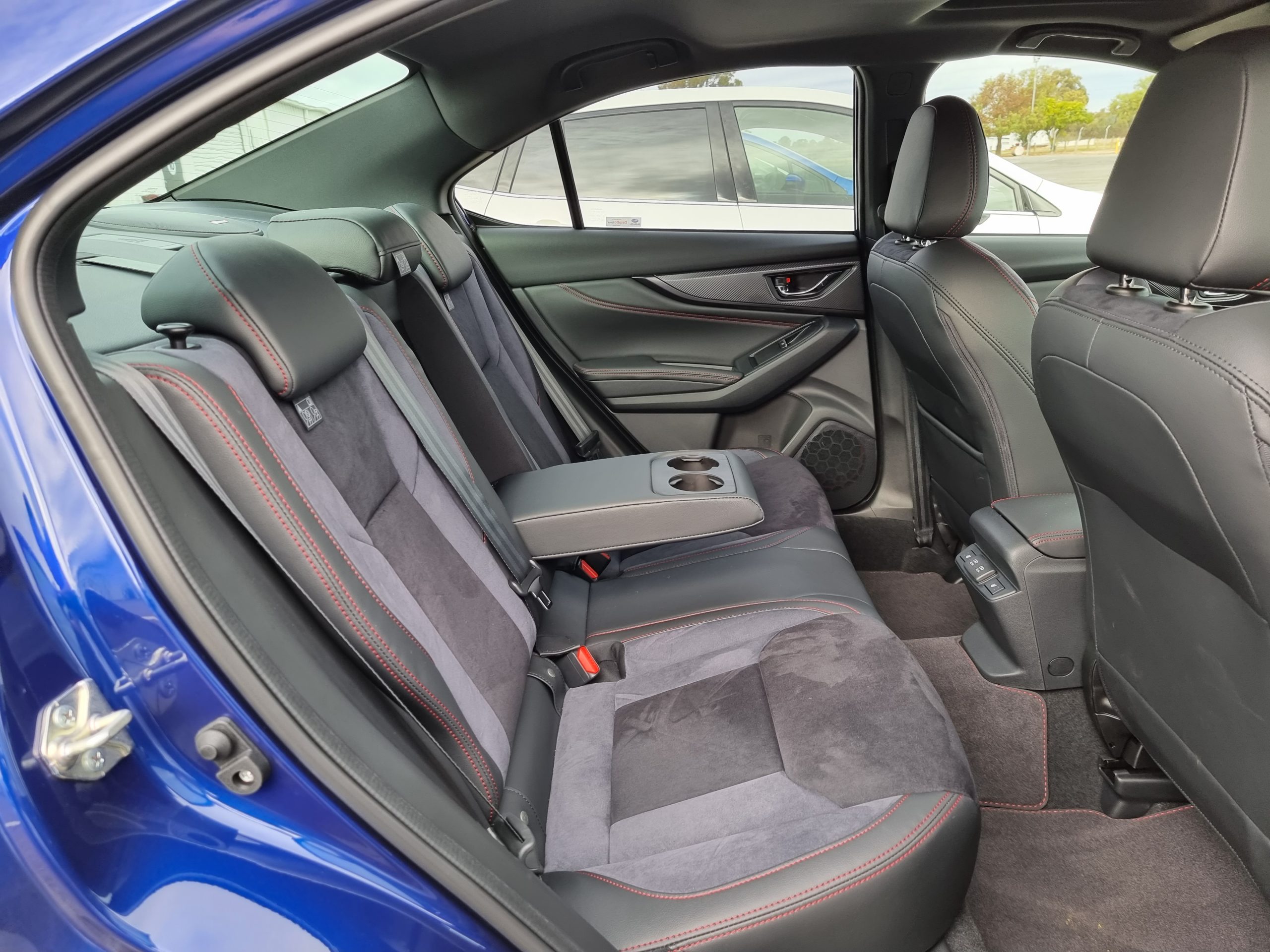
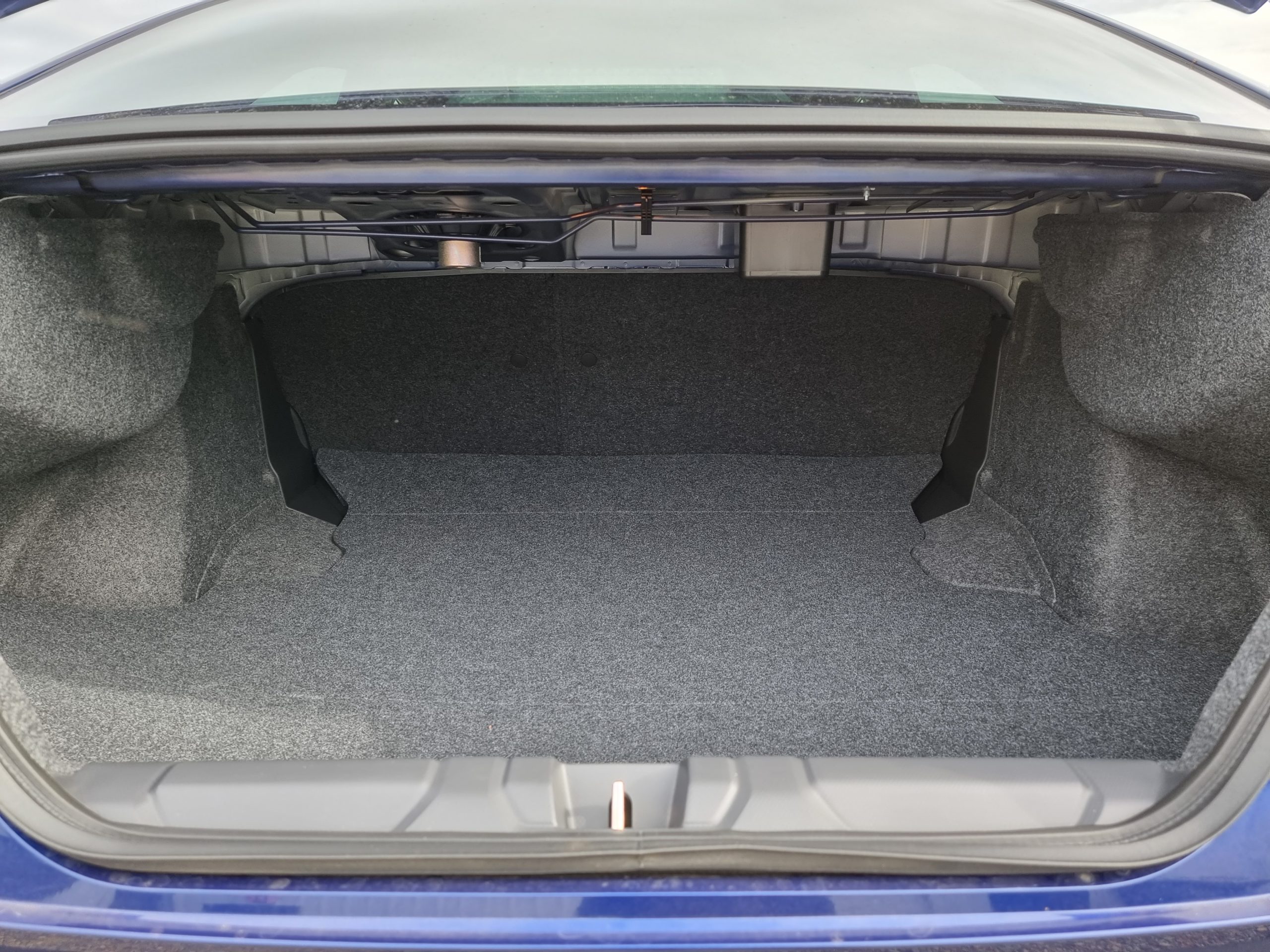
The 2023 Subaru WRX sedan has 414L of boot space in base trim and 411L in the RS and tS. The 2023 Subaru WRX Sportswagon features 492L of cargo space, which expands to 1430L when the rear seats are folded. A 17-inch spare wheel sits under the boot floor of each model.
Service & Warranty:
Like all other new Subaru products in Australia, the 2023 Subaru WRX comes with a five-year/unlimited km warranty with only 12 months of roadside assistance. Interestingly, Subaru has upgraded the WRX’s service intervals to once-yearly/every 15,000km – a big difference from previous six-monthly service intervals in the Subaru range.
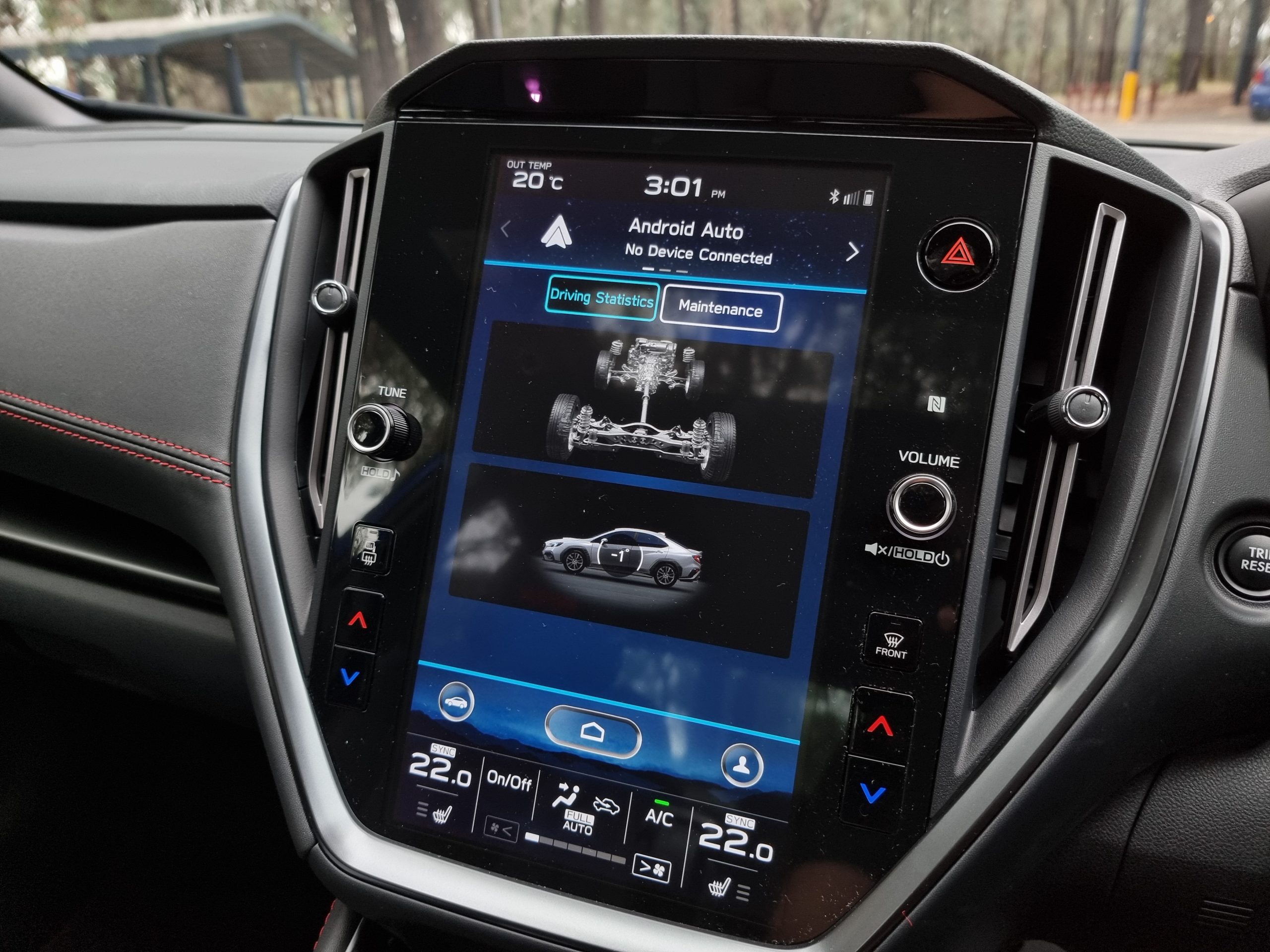
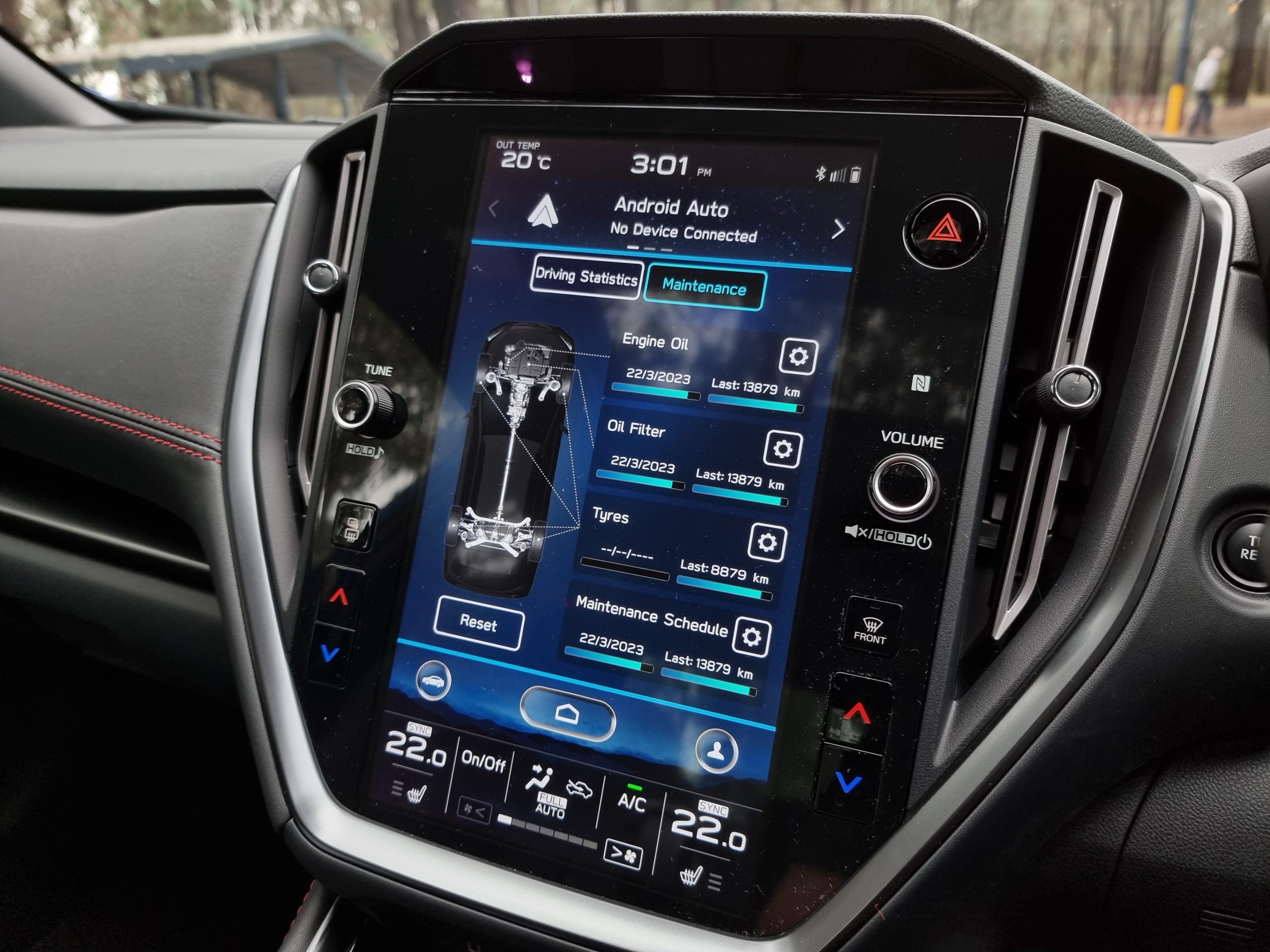
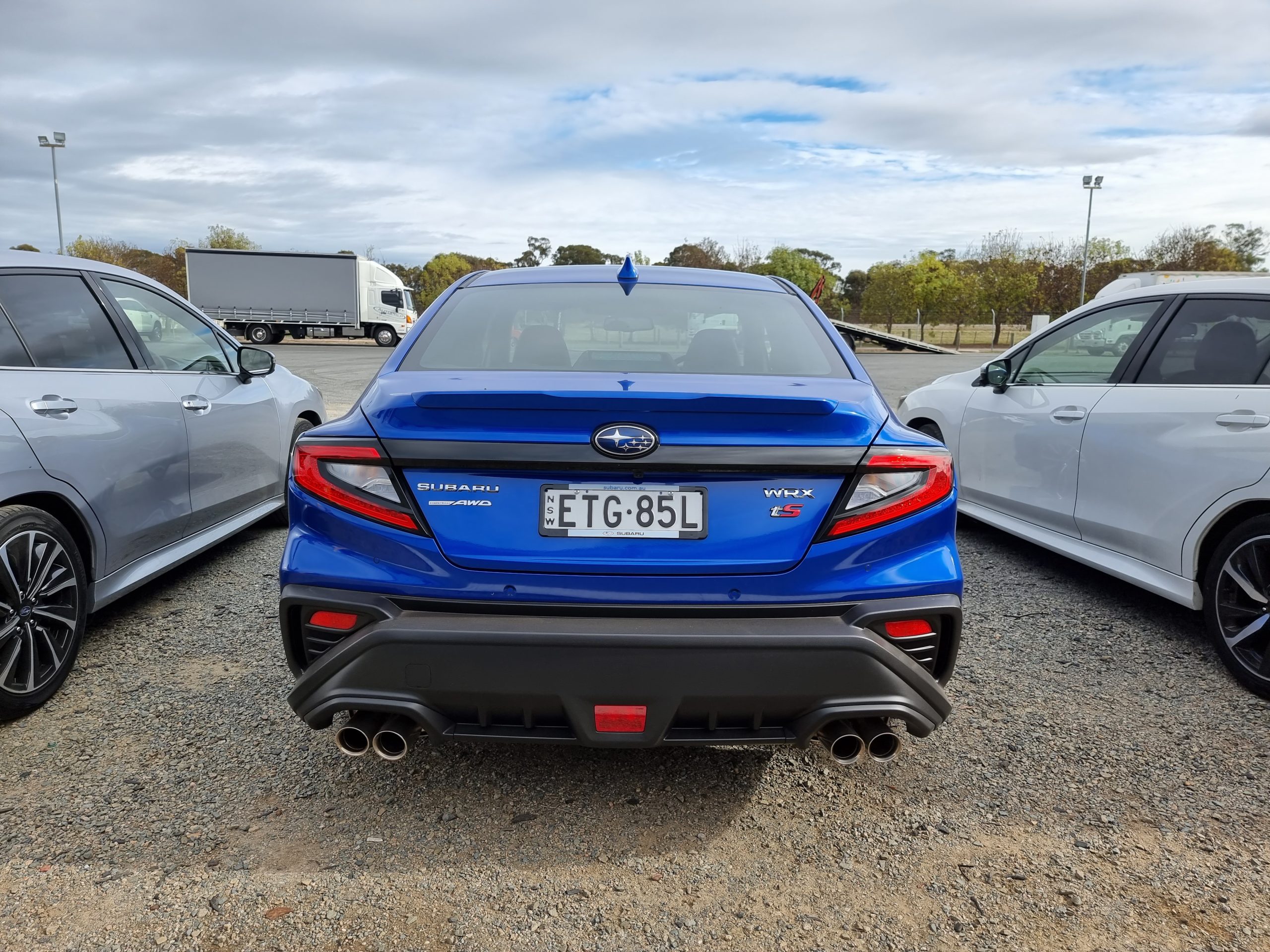
Servicing the WRX automatic costs $2,365.74 ($473 per service) over five years/75,000km – the manual costs slightly more at $2,433.04 ($486.60) over the same timeframe. That makes the WRX not cheap to service, but far more affordable than past models.
The 2023 Subaru WRX DiscoverAuto Rating: 7.5/10
The latest 2023 Subaru WRX is another fine Subaru which stays true to its heritage by offering a grippy AWD experience for a relatively affordable price. It’s now much more refined and quieter than before, ride quality is better than before and it still delivers enough driver thrills to keep enthusiasts entertained. We’re still not sold on the automatic variants, which feature CVT gearboxes and thus limit their sporting appeal and nor are we massive fans of the wagon, which feels decidedly watered down for a true WRX. We also wish manual models came with life saving safety tech like their automatic counterparts did. It’s 2023 and we expect safety to come standard on every model, regardless of spec or transmission choice.
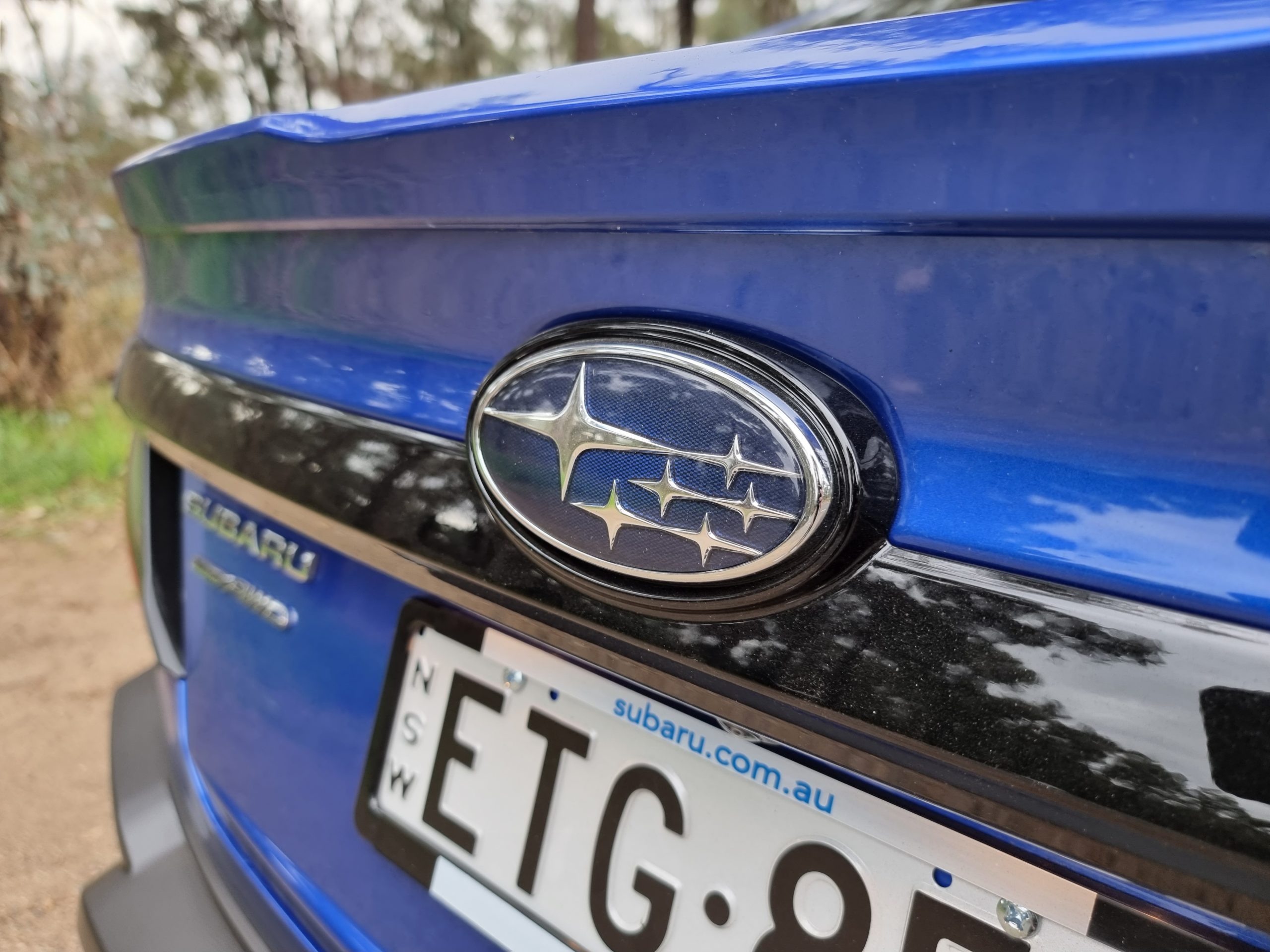
The WRX remains a great all-rounder however in this latest fifth generation, and is priced well too, meaning it deserves the sales success which awaits it. With performance vehicles forever fading away, this might very well be your last ticket to jump on the fast Subaru train. But do check out rivals to the WRX as there are some very compelling performance car options around.
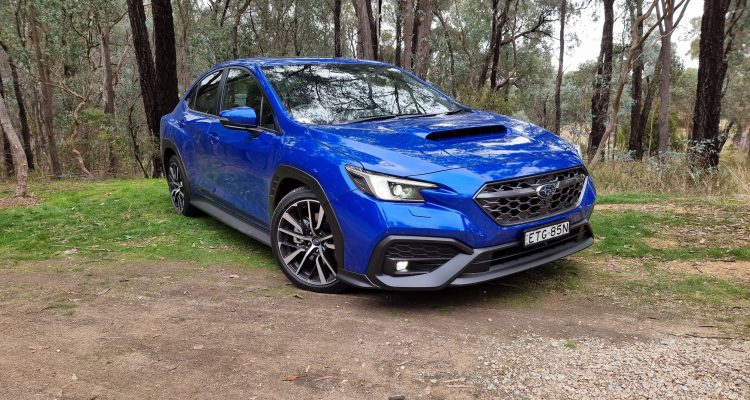
Leave a Reply